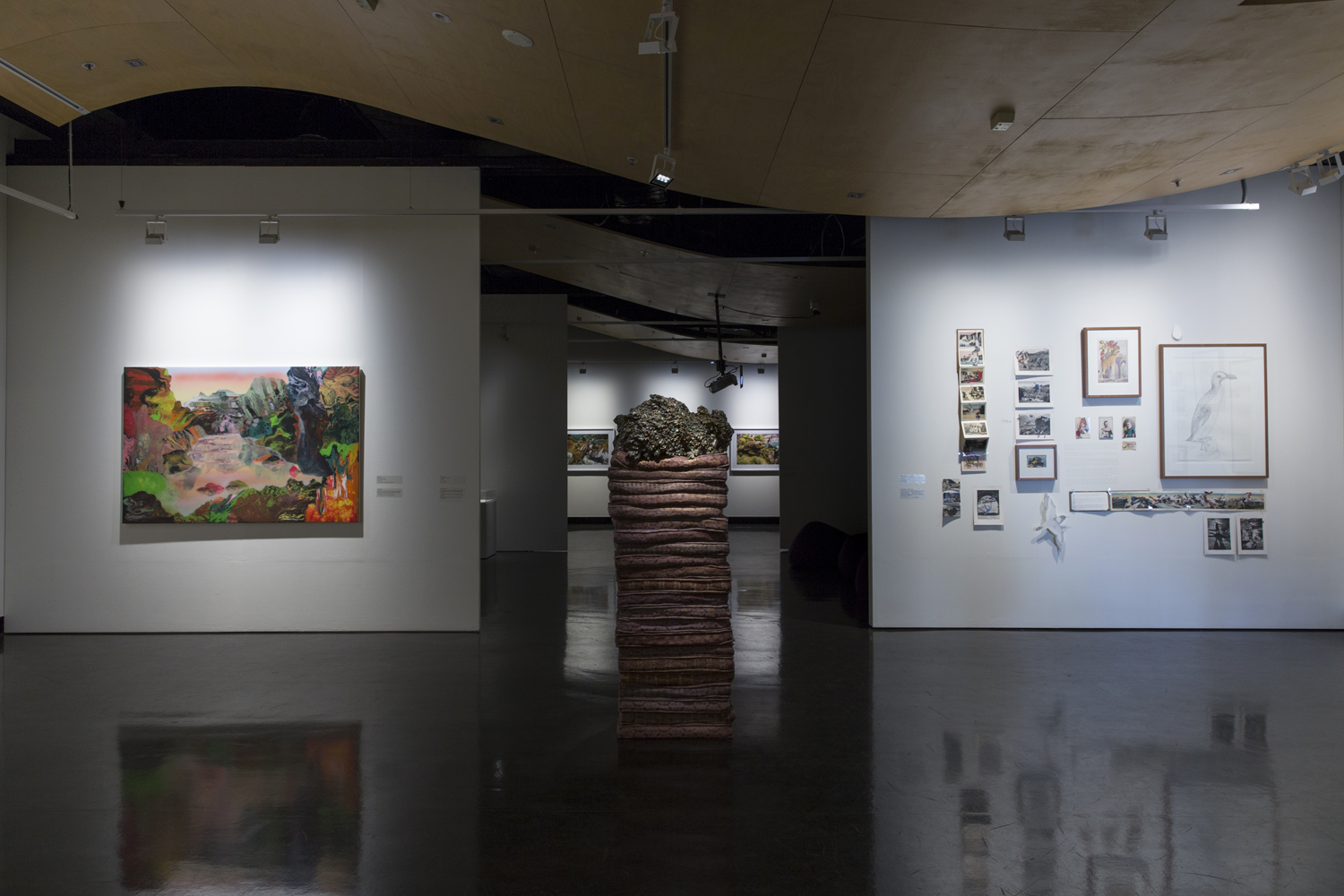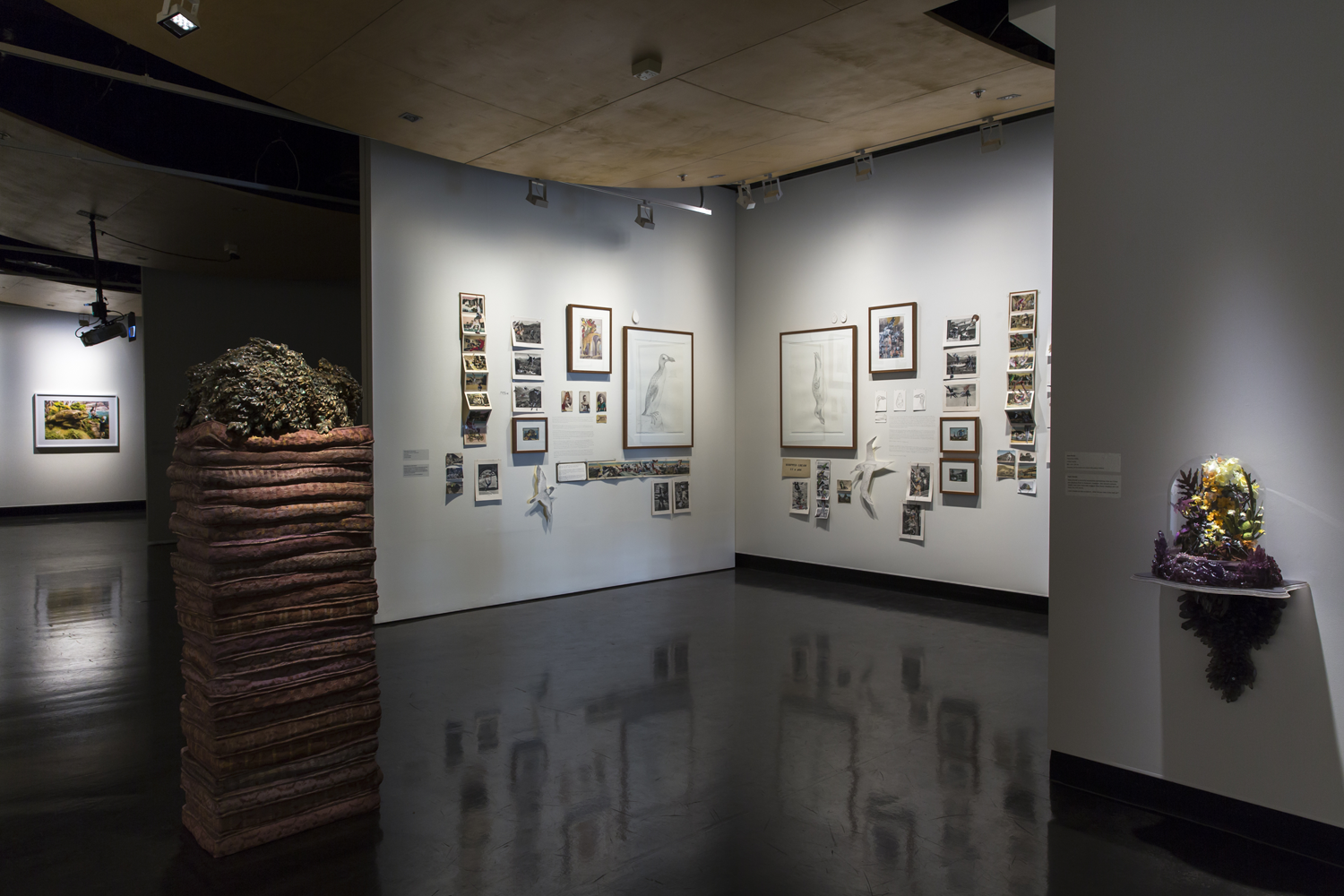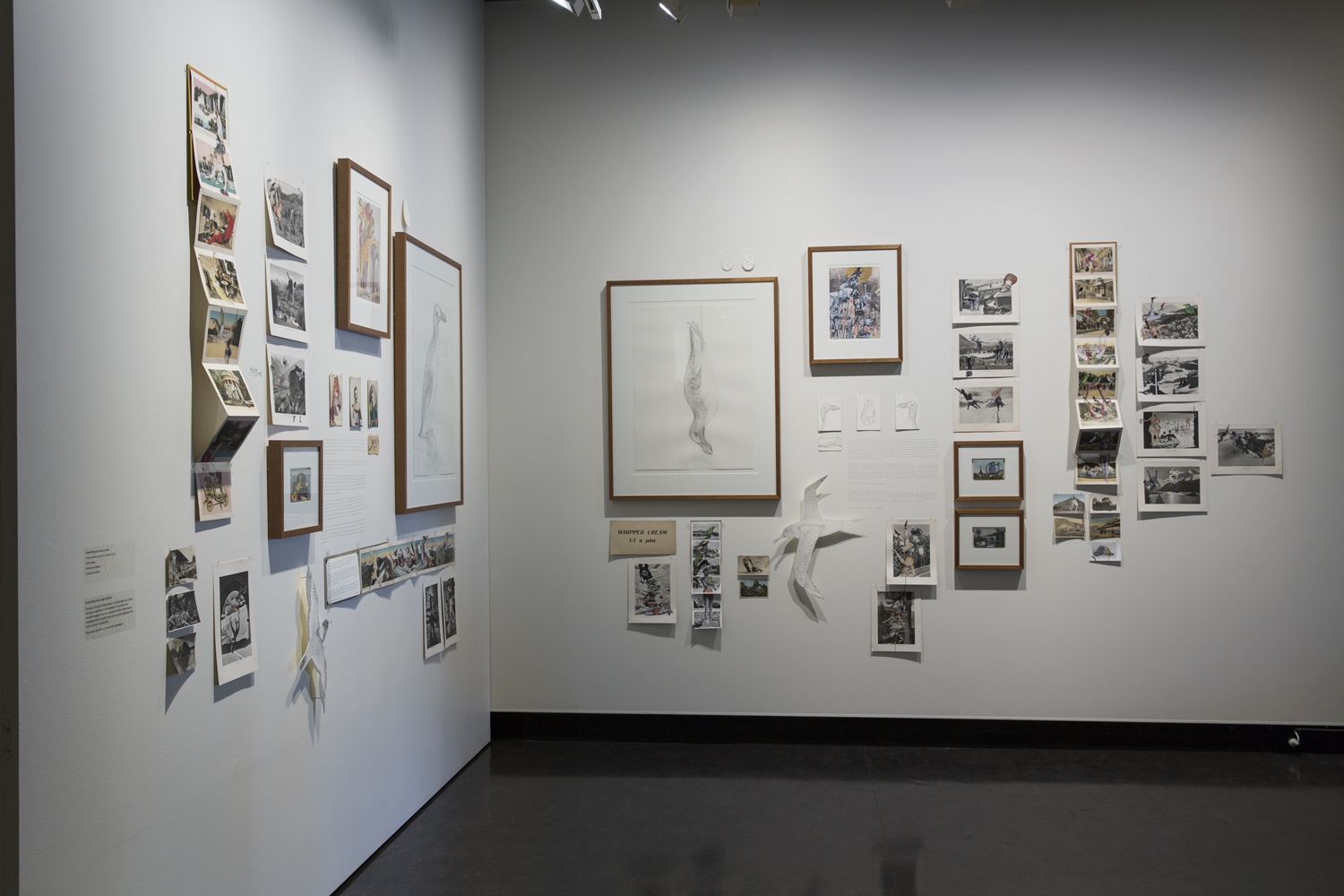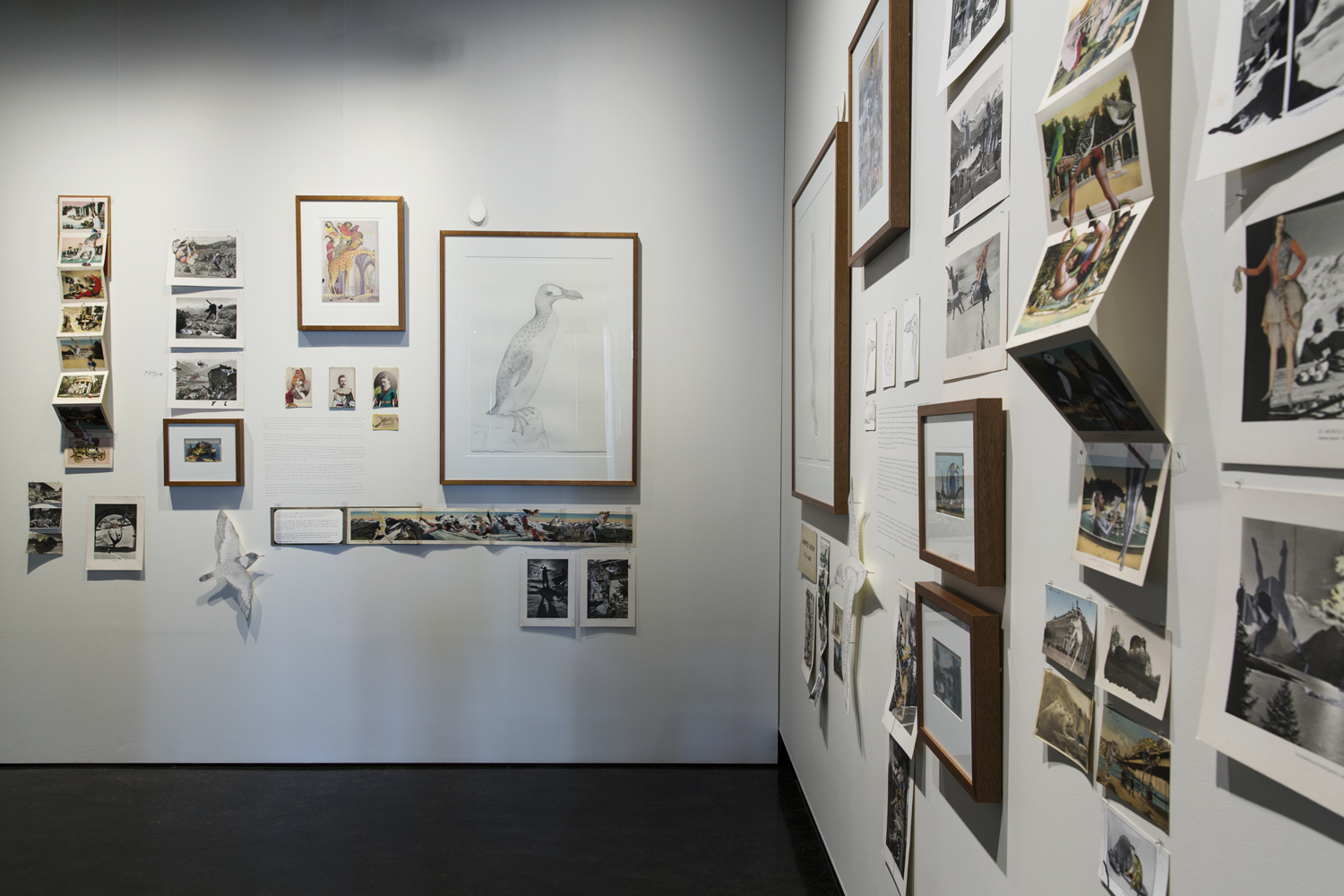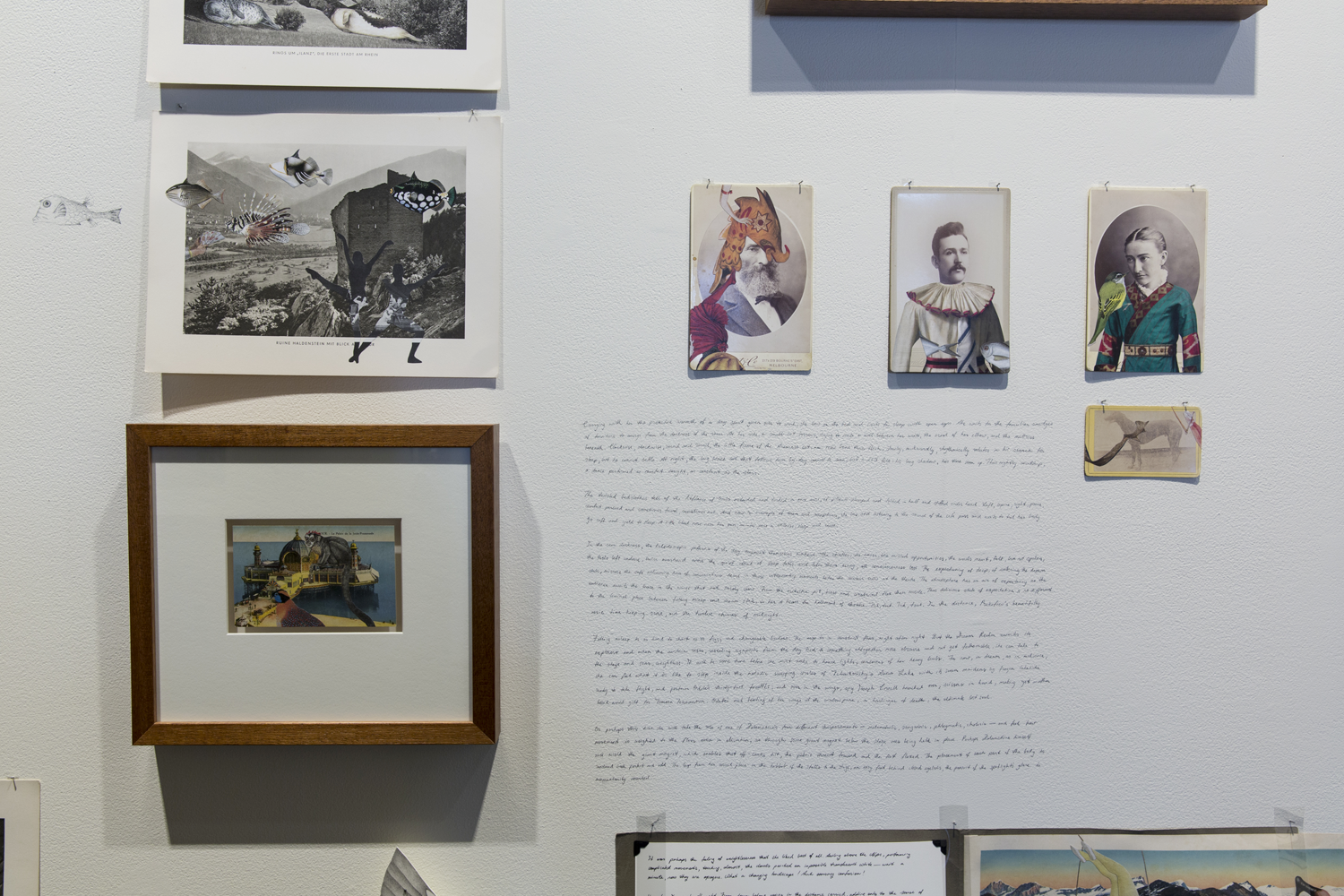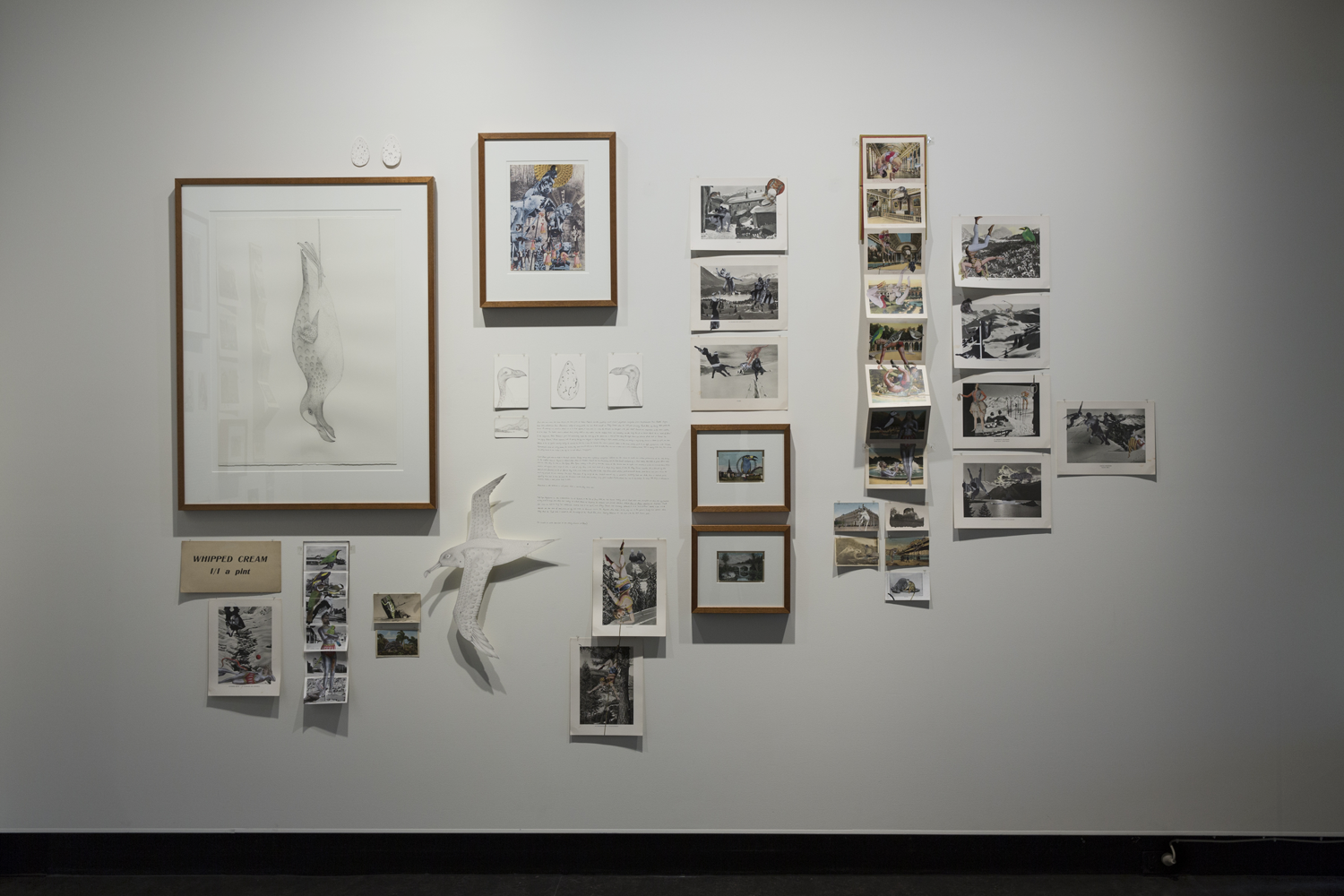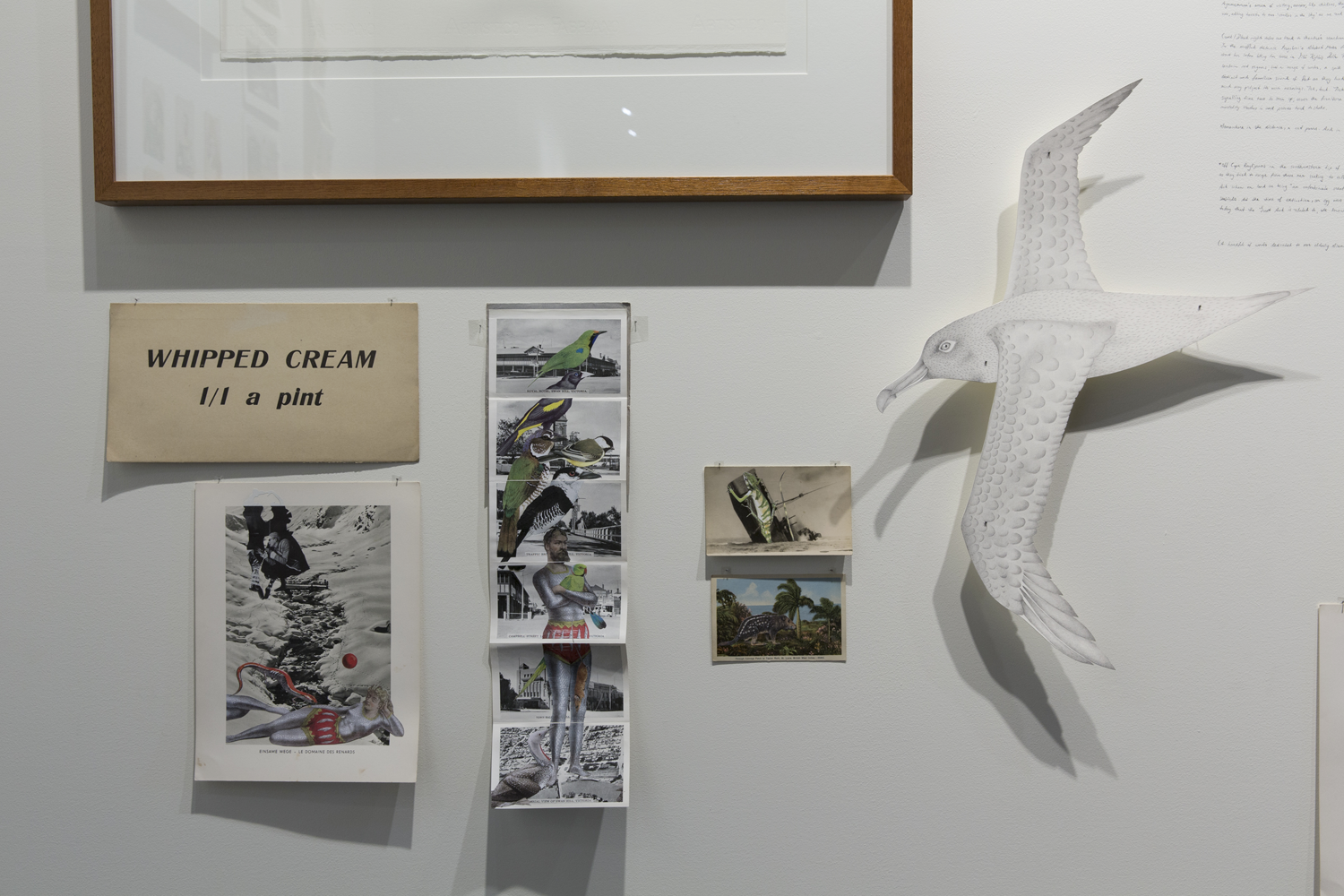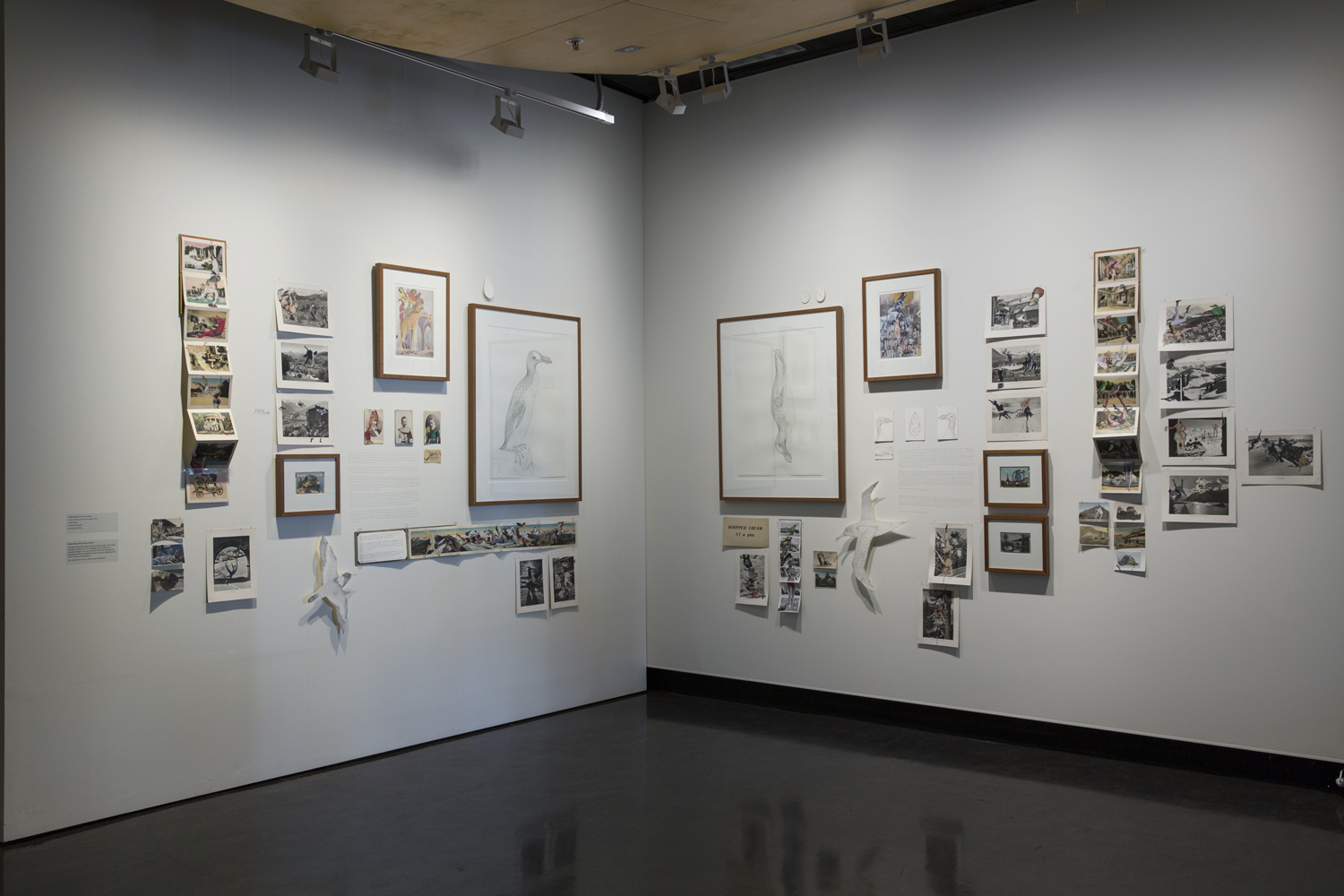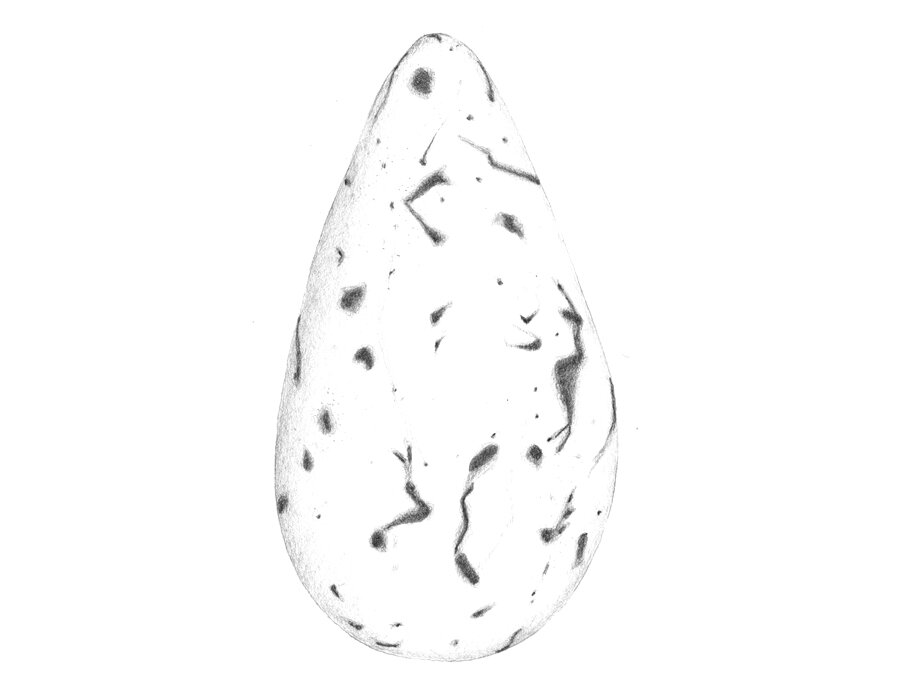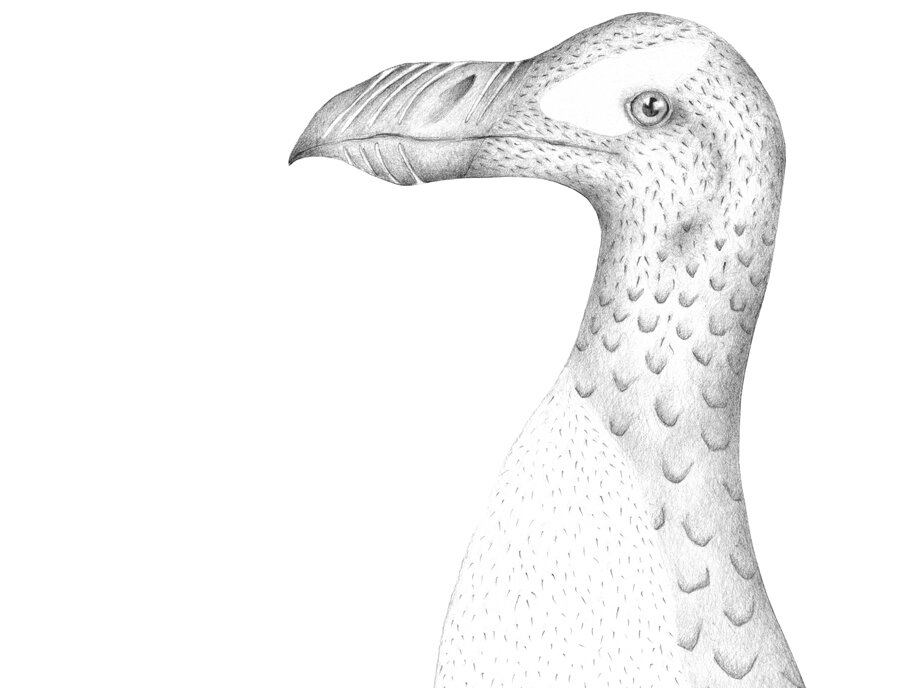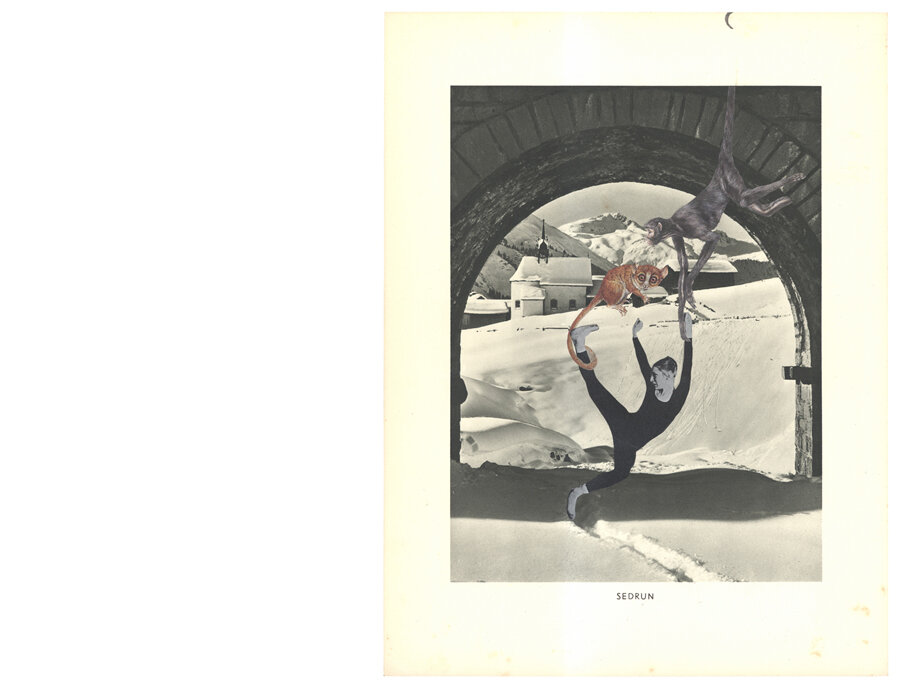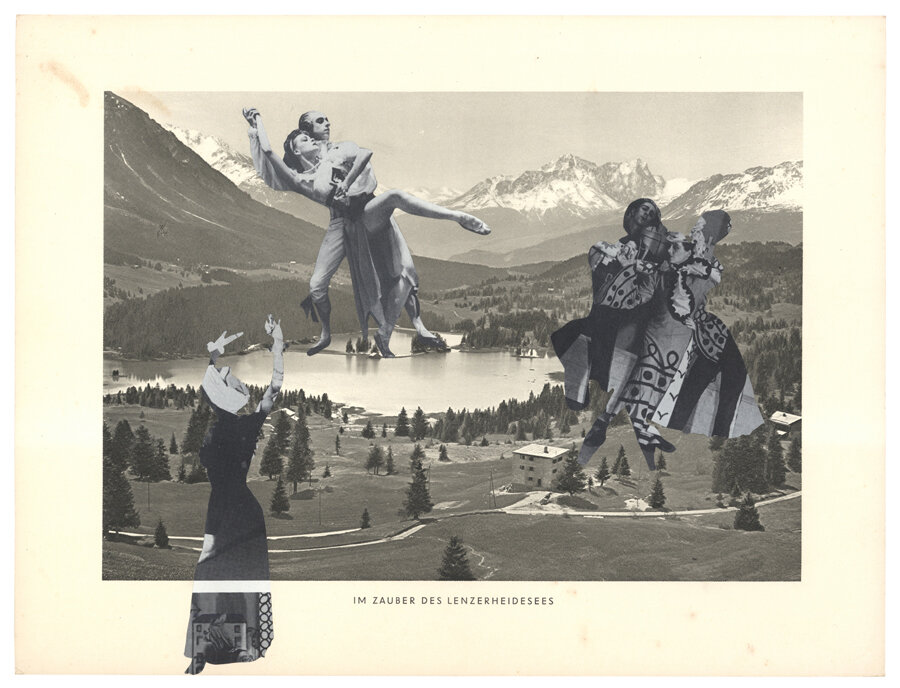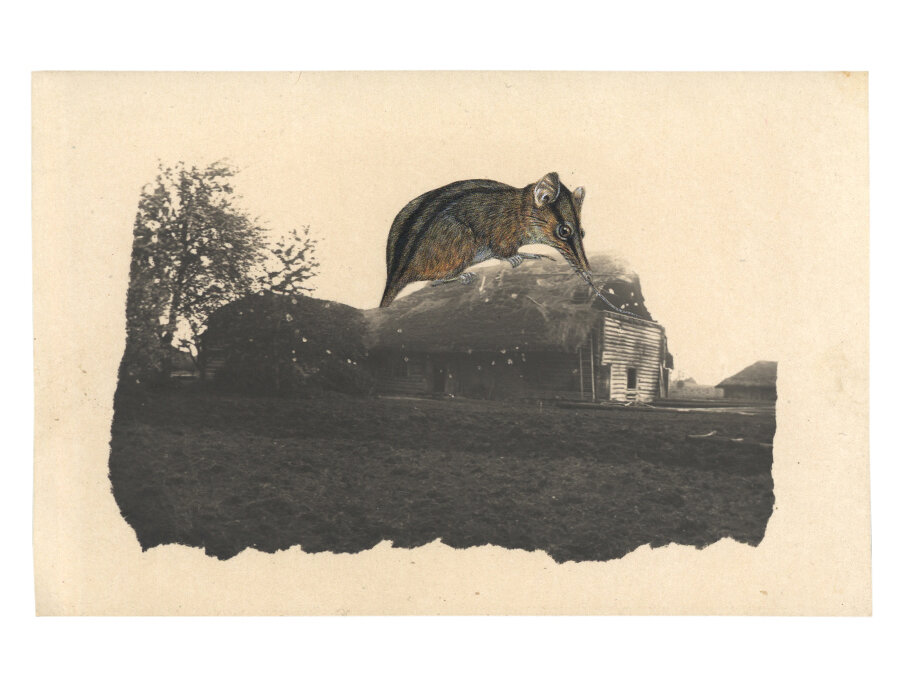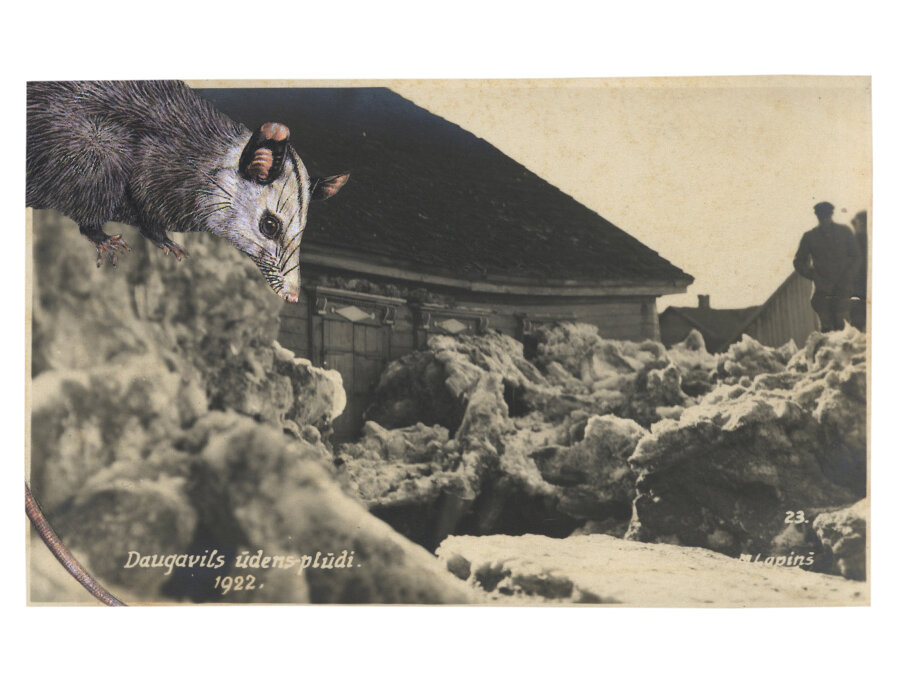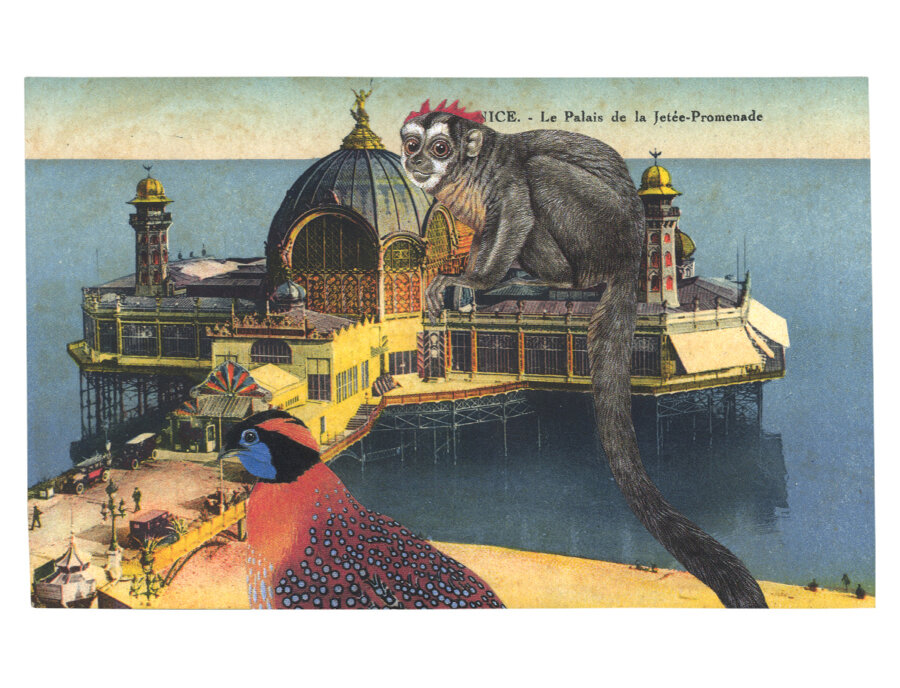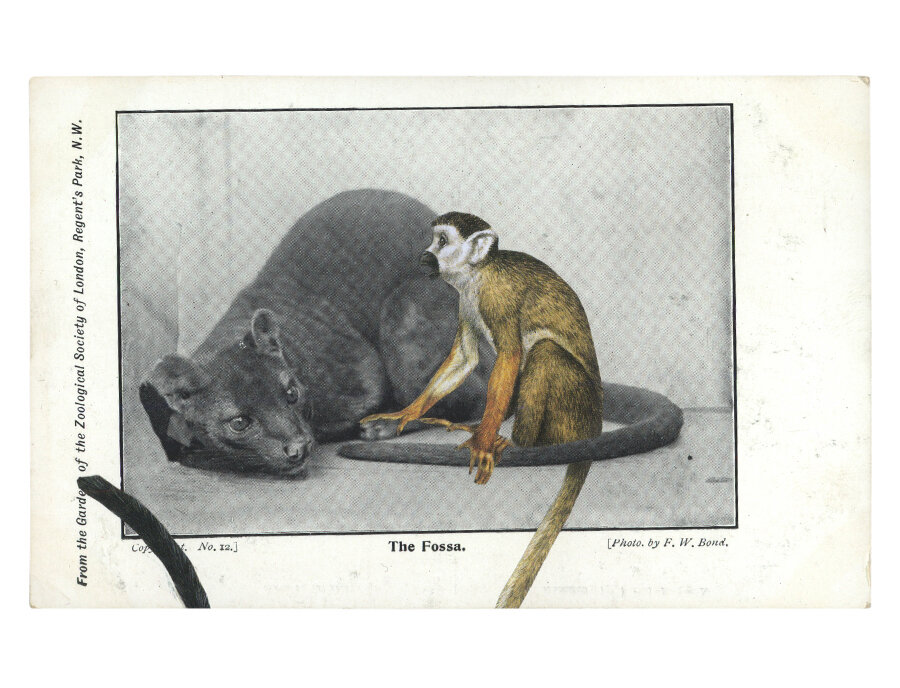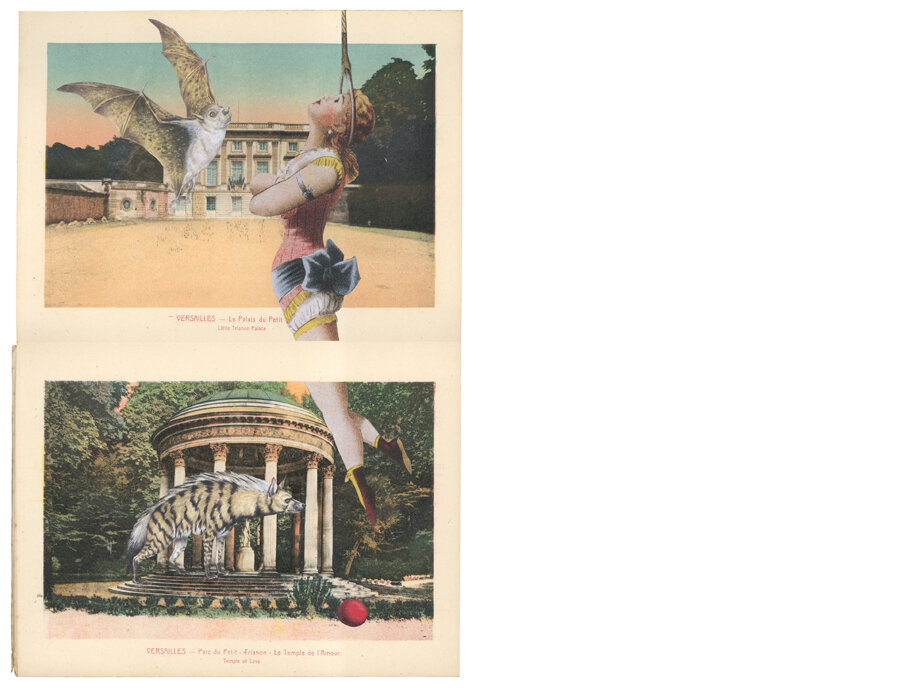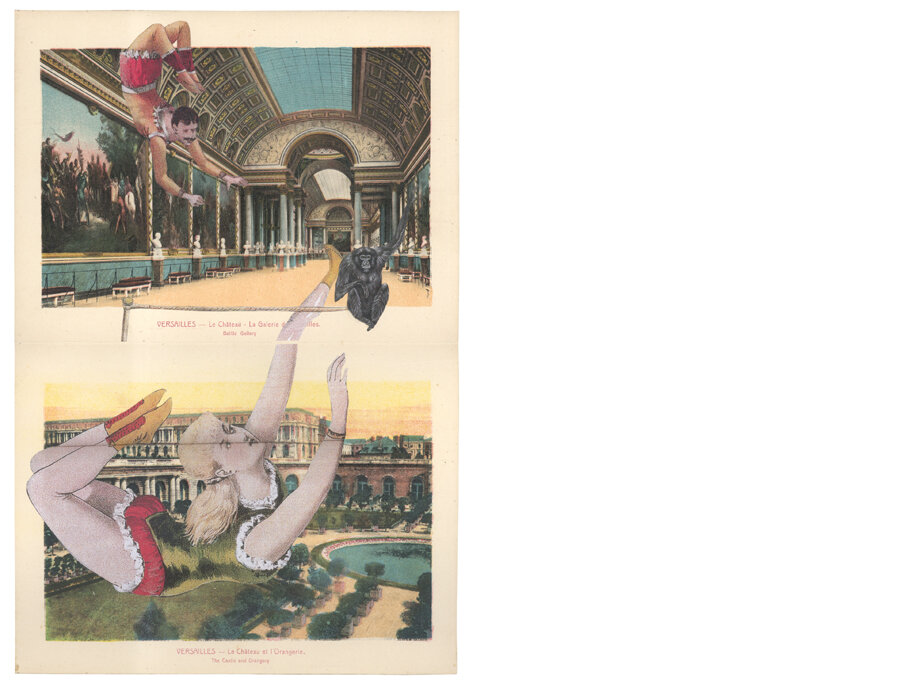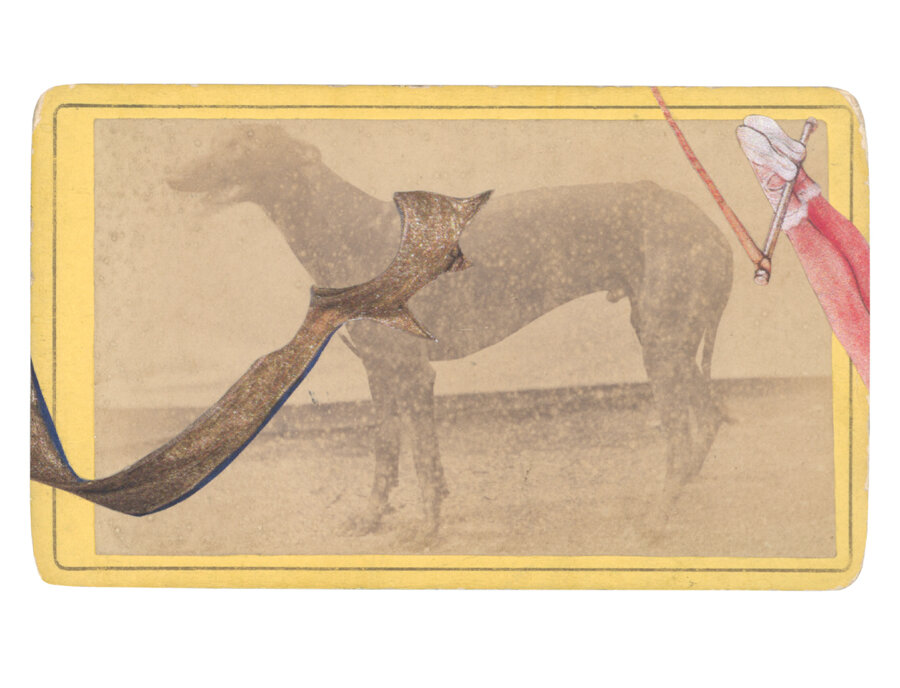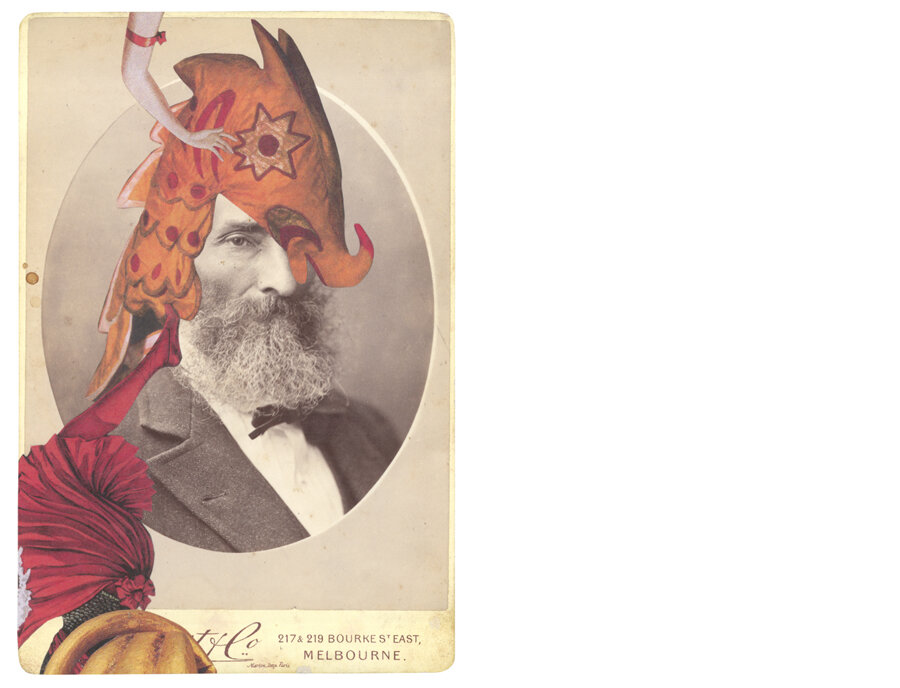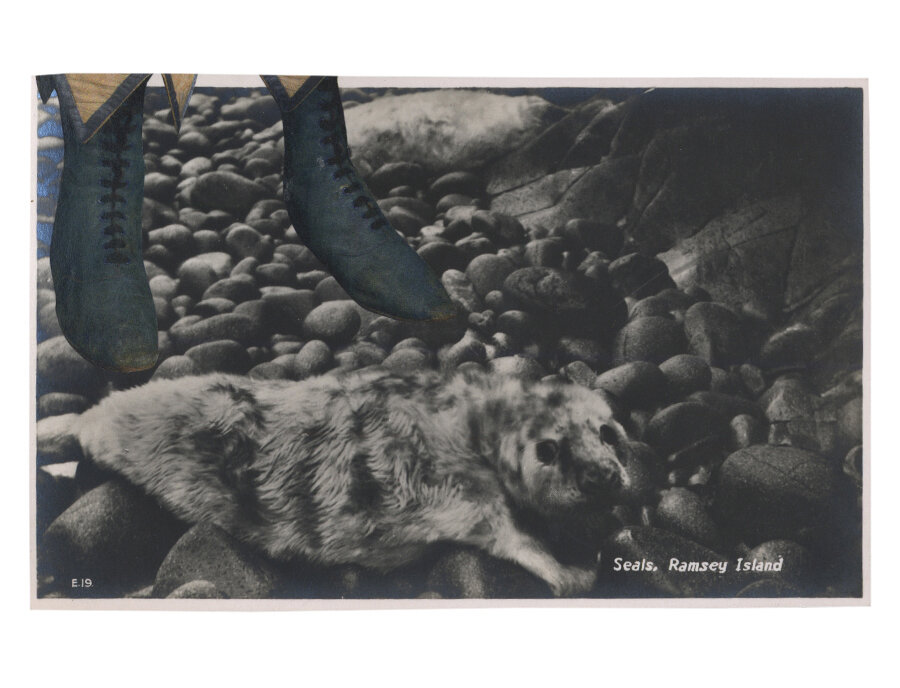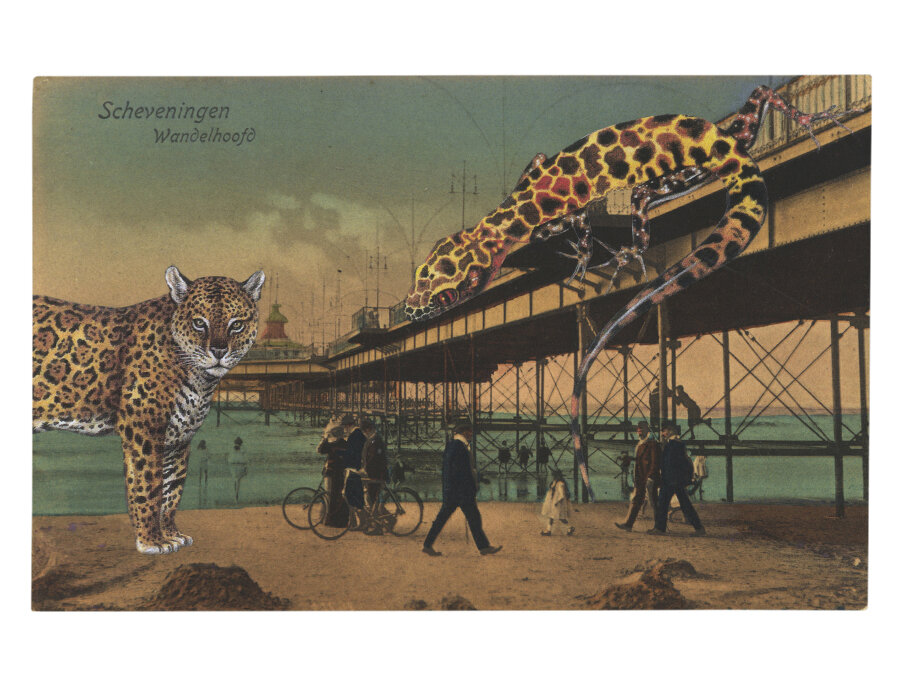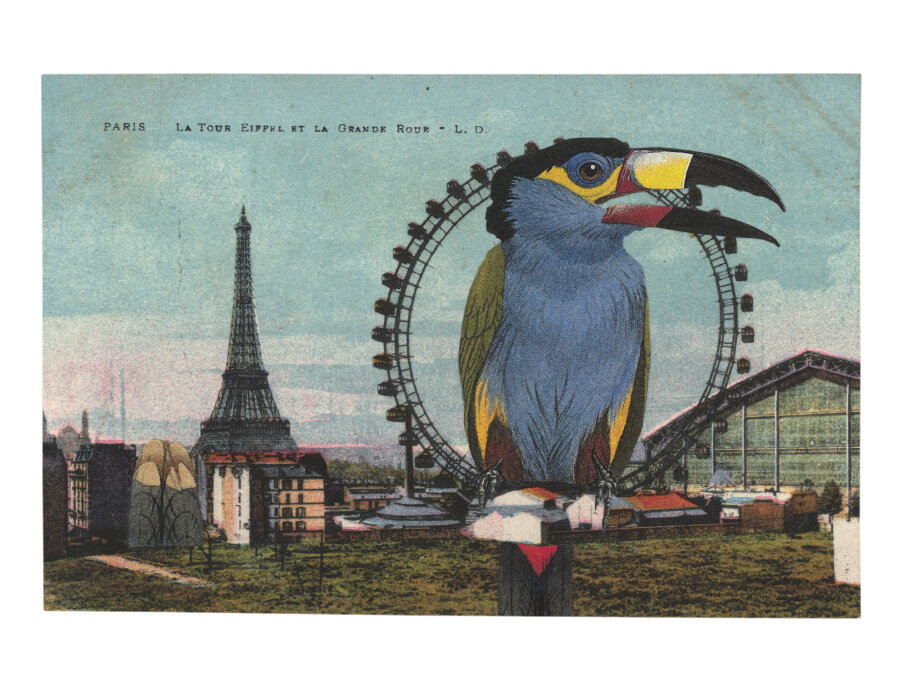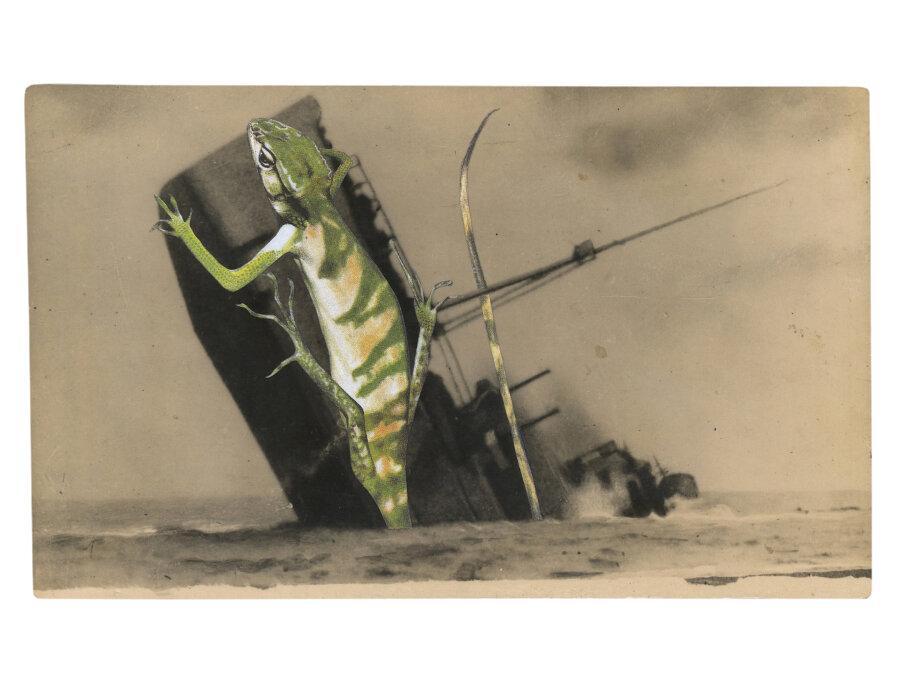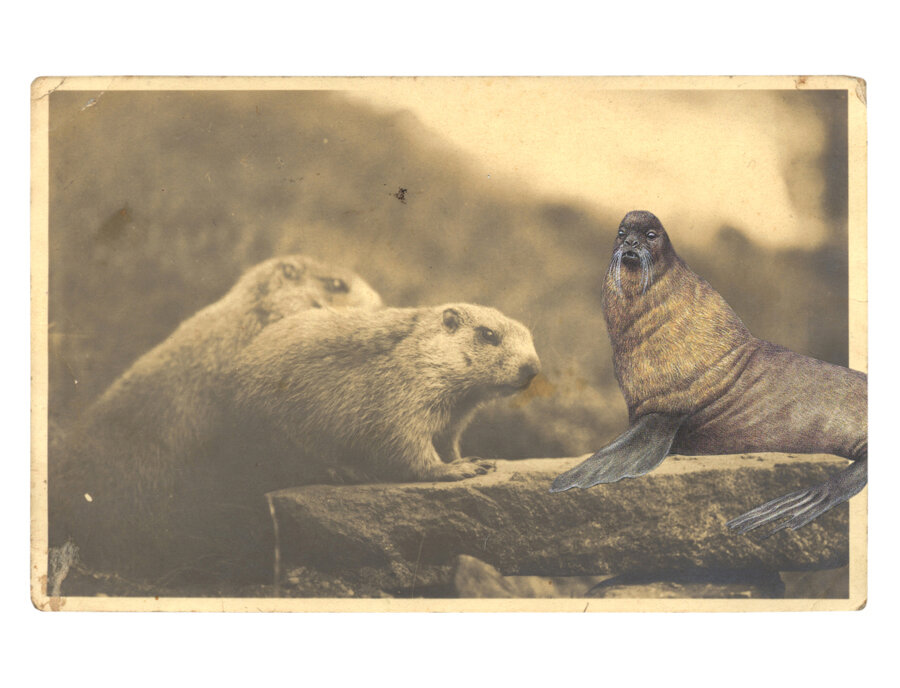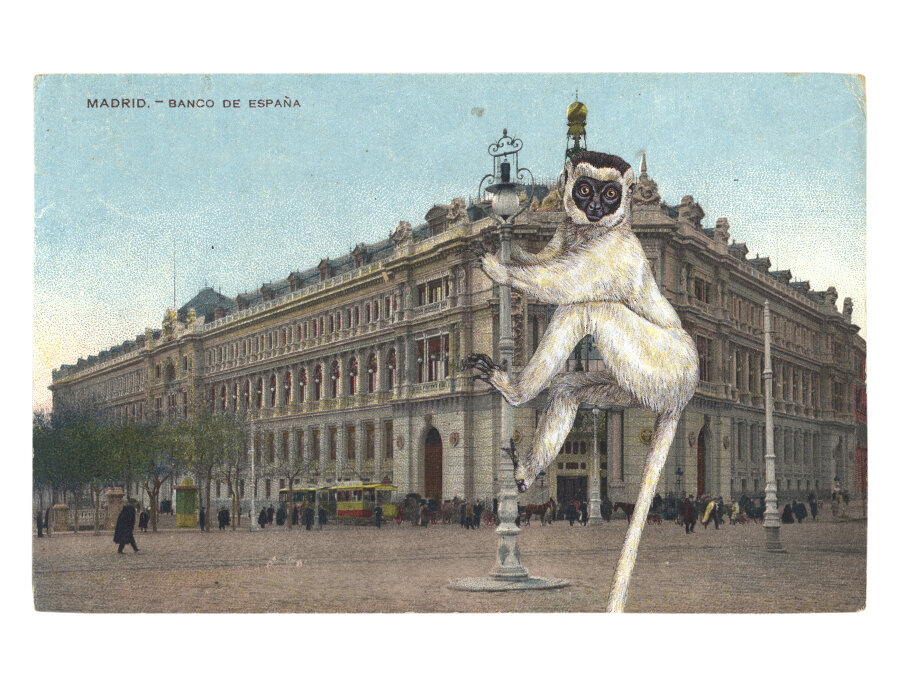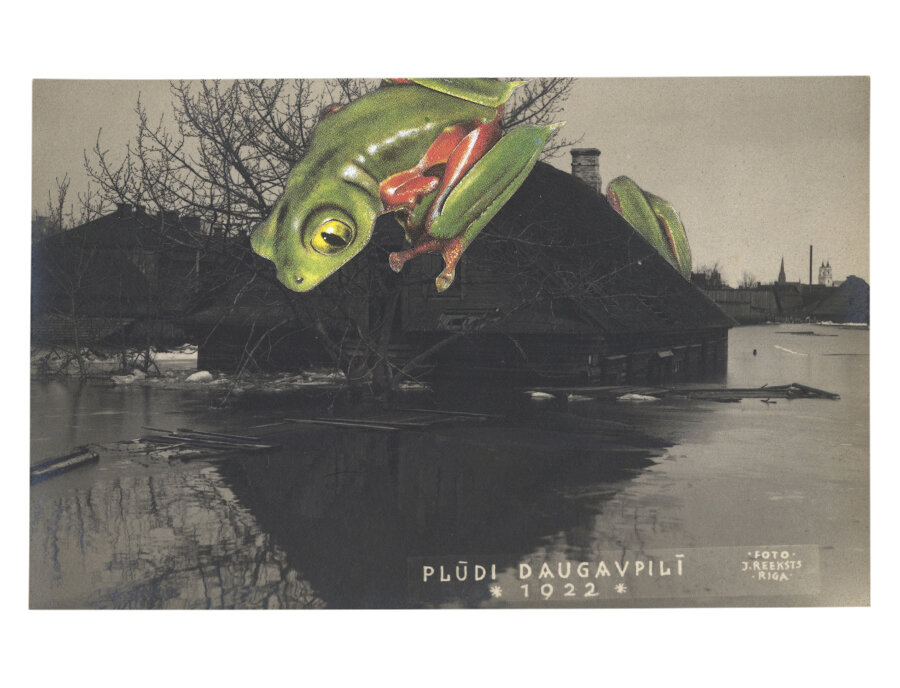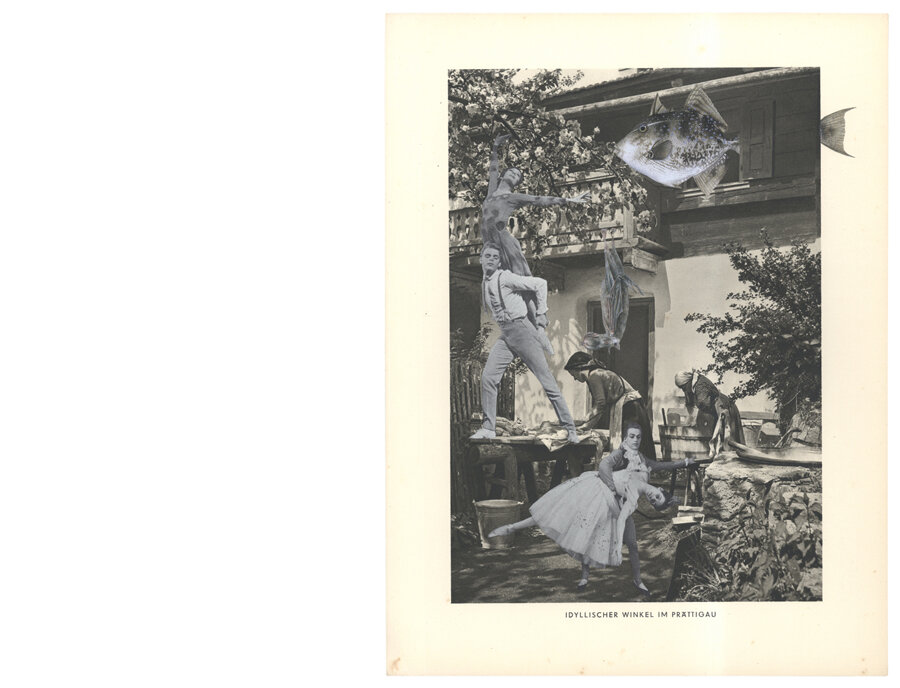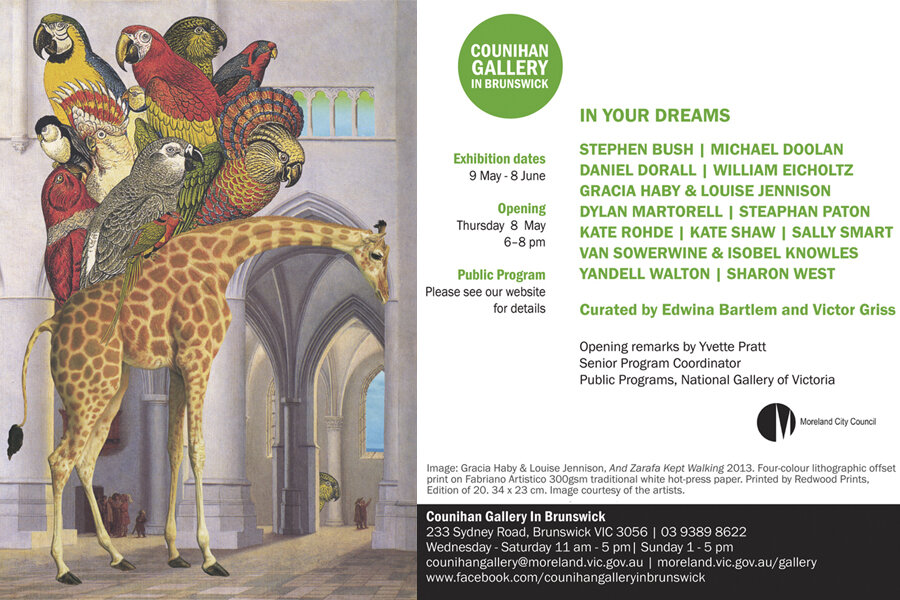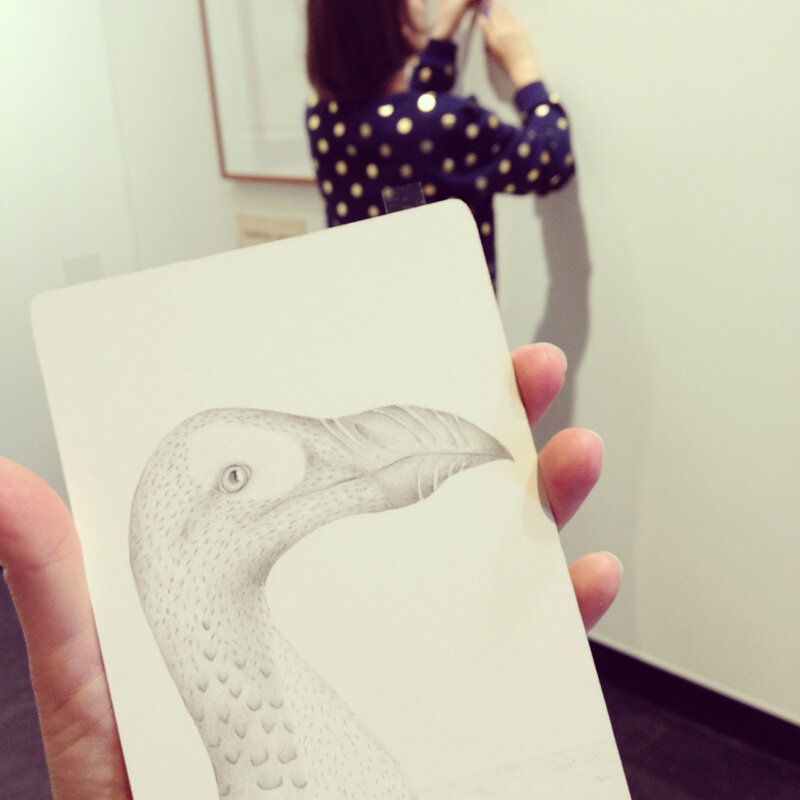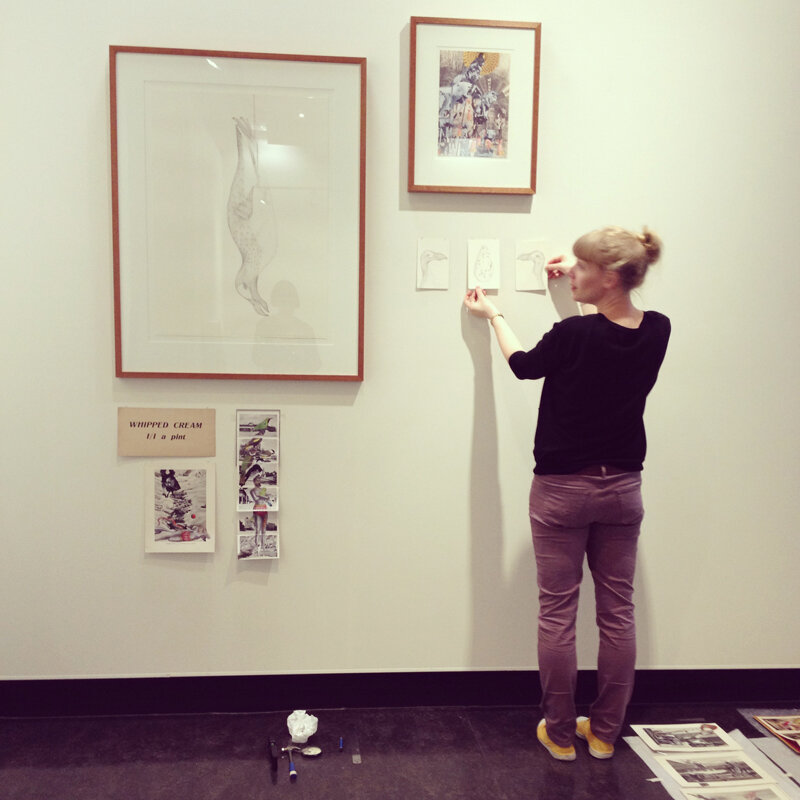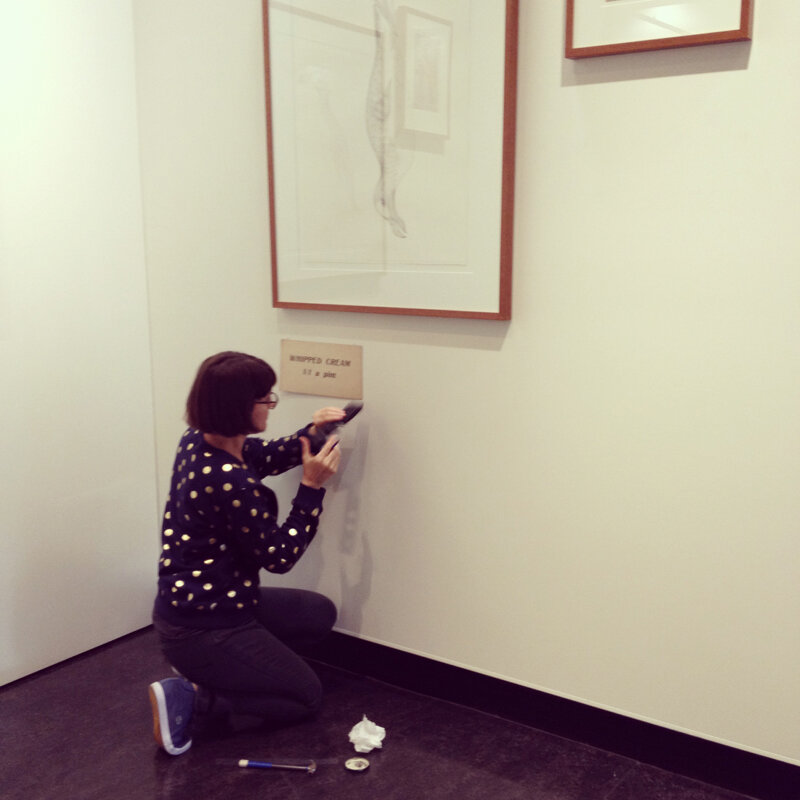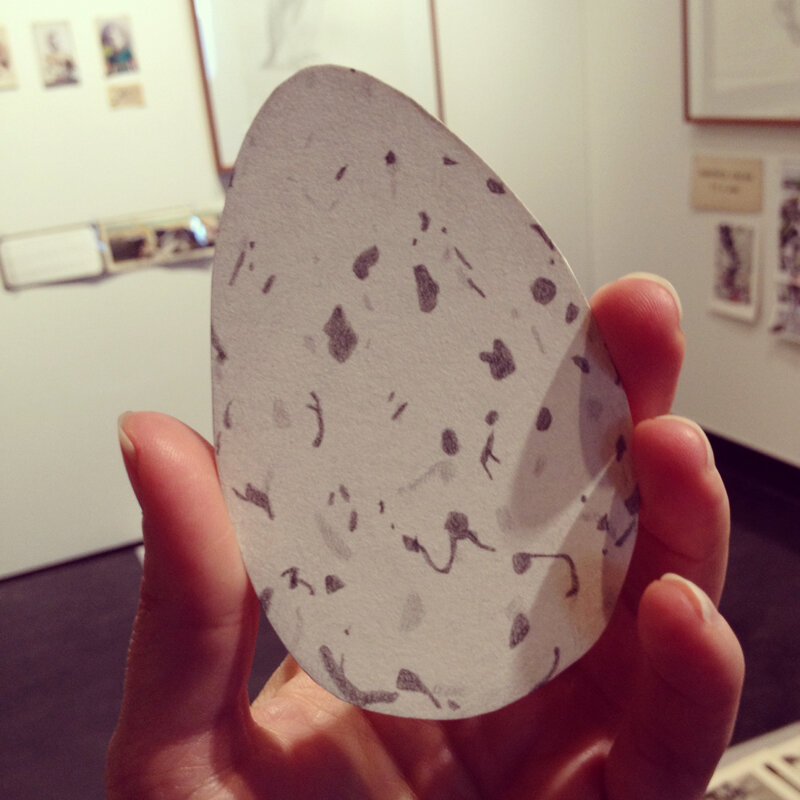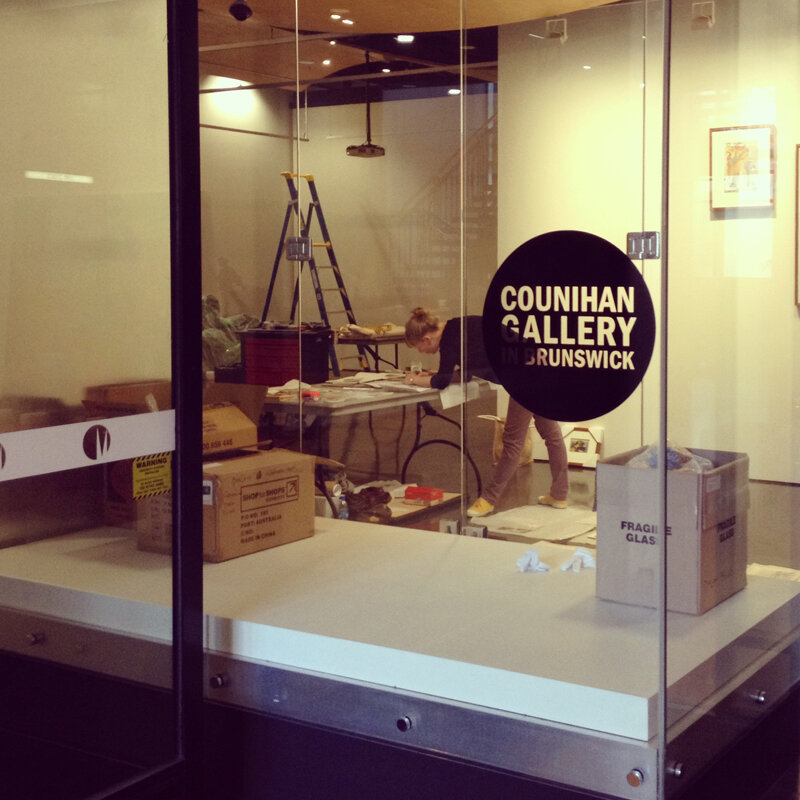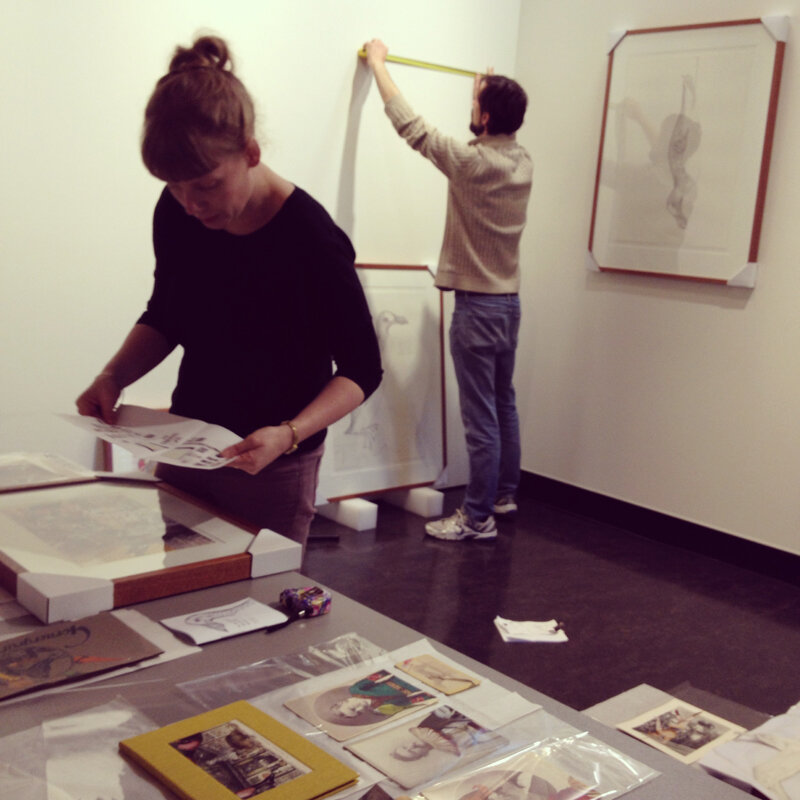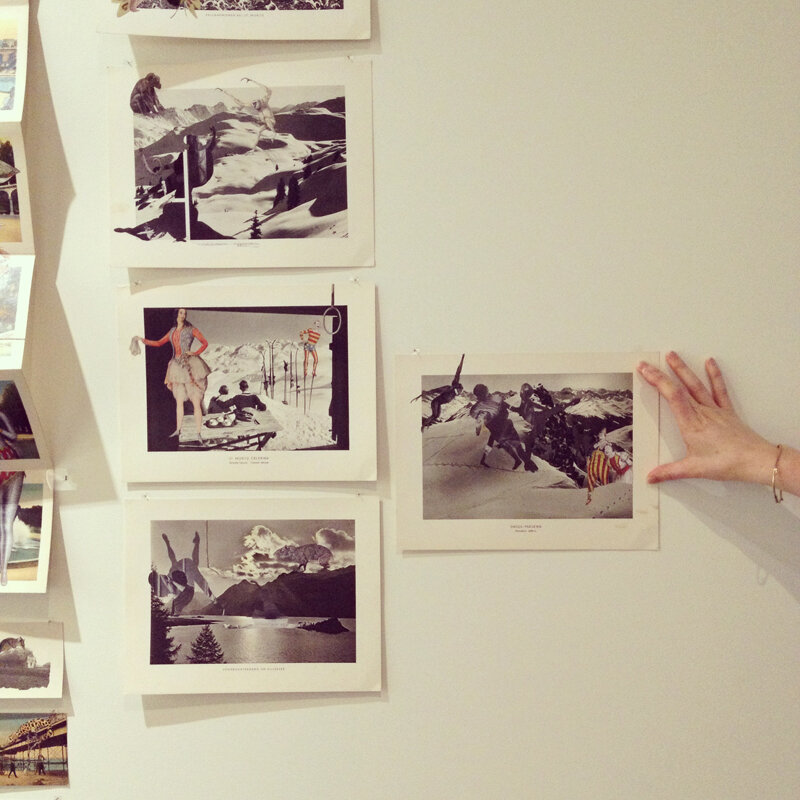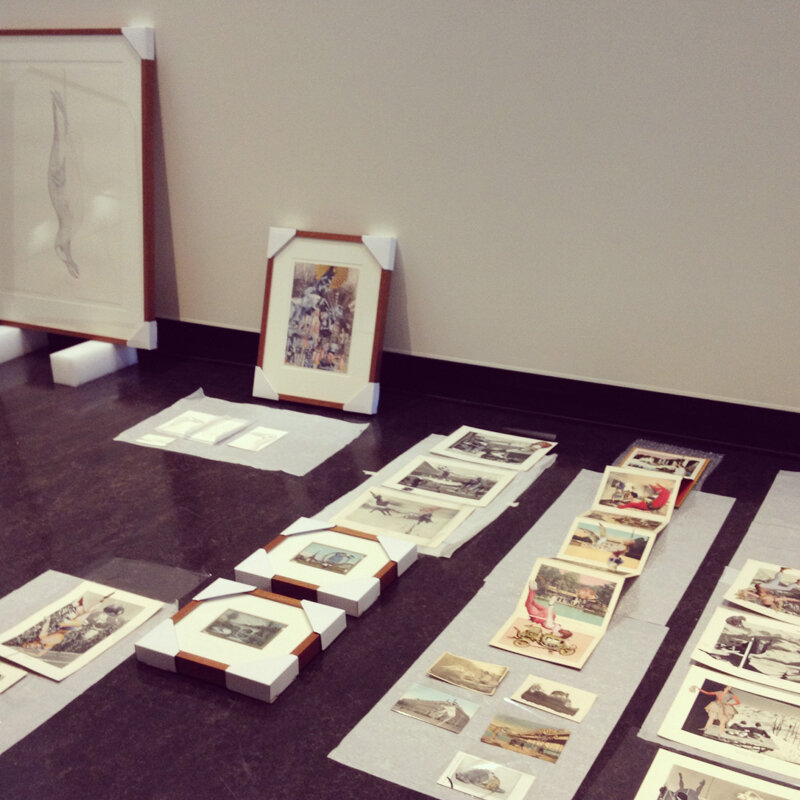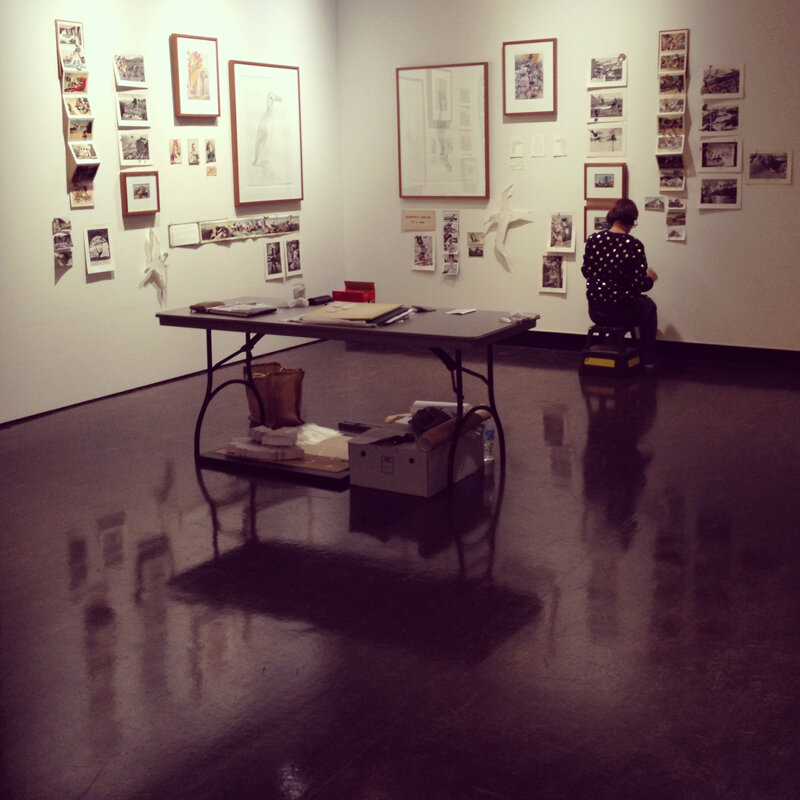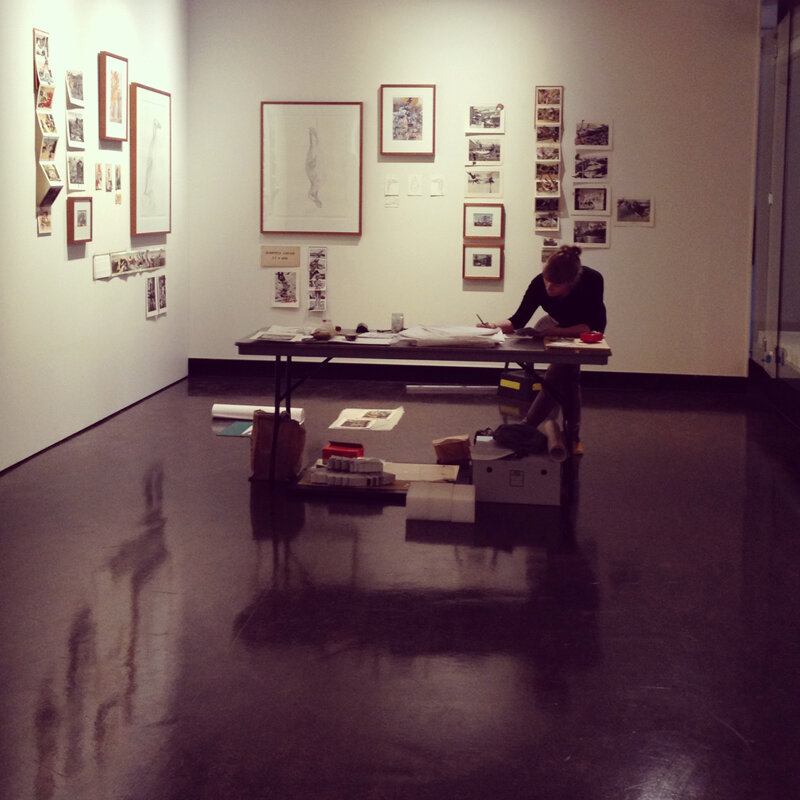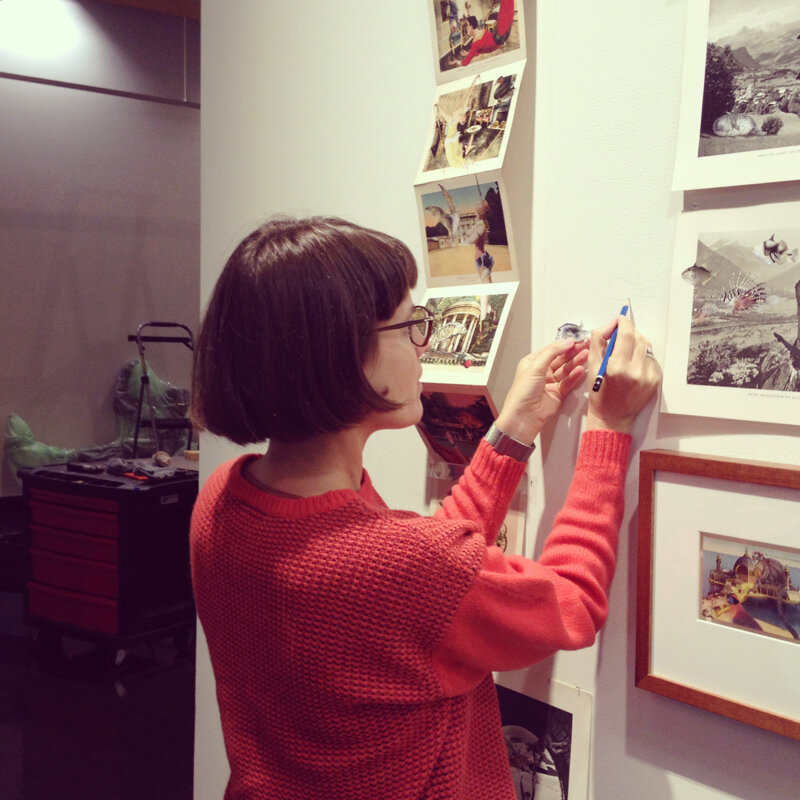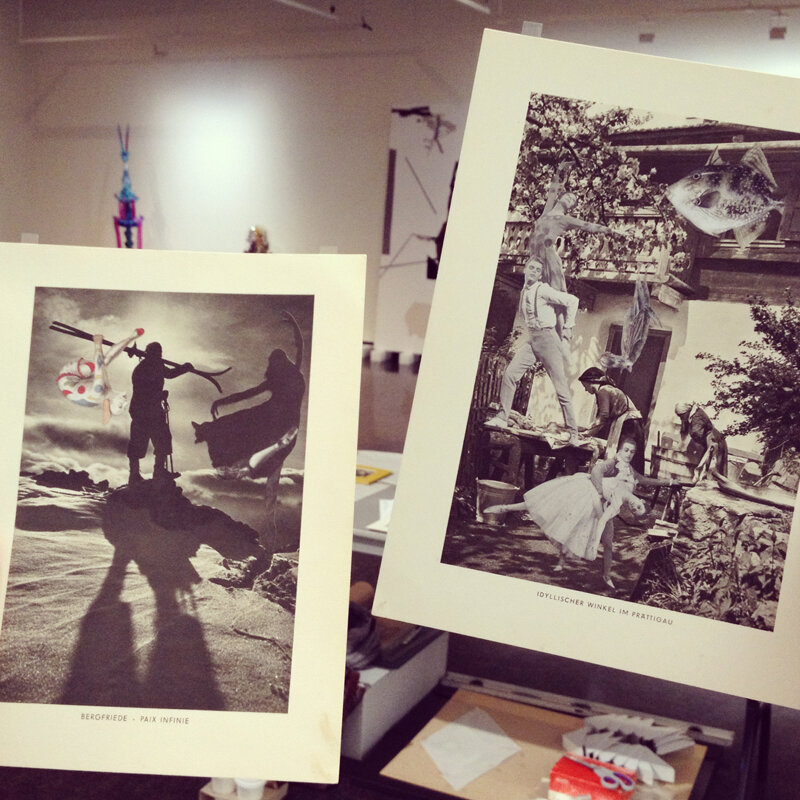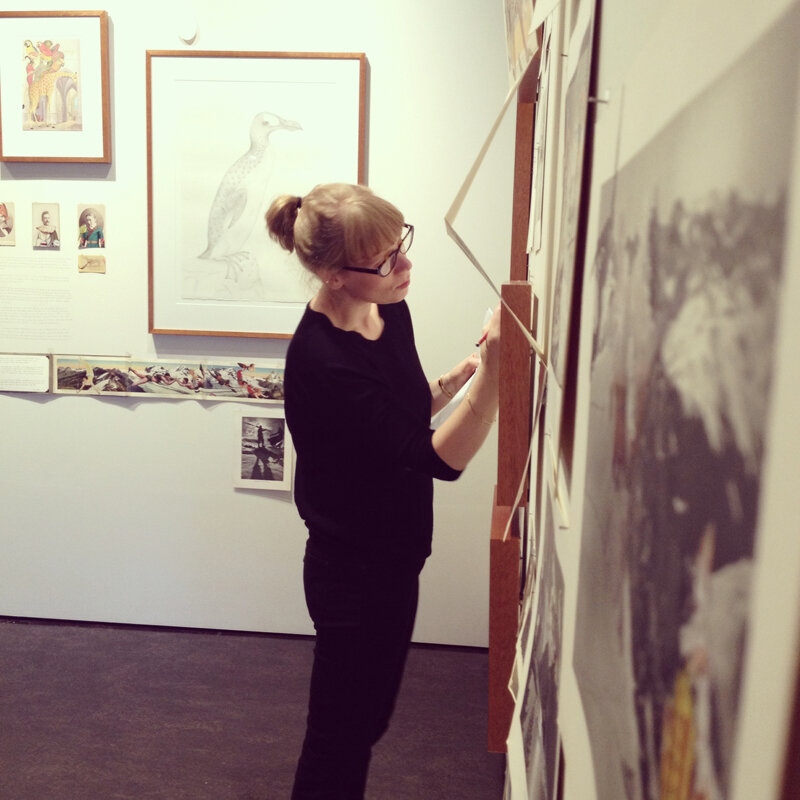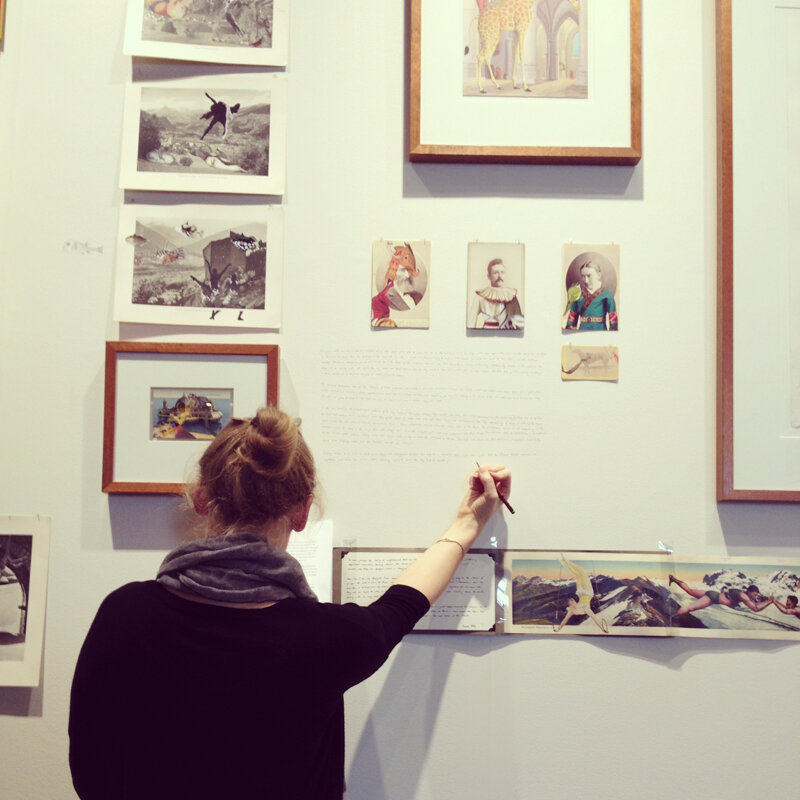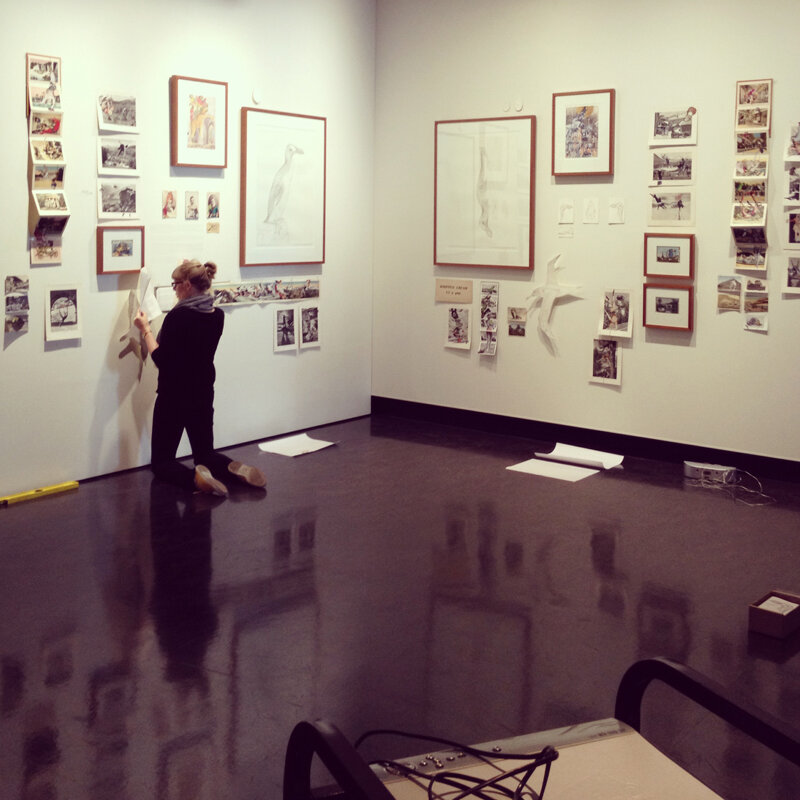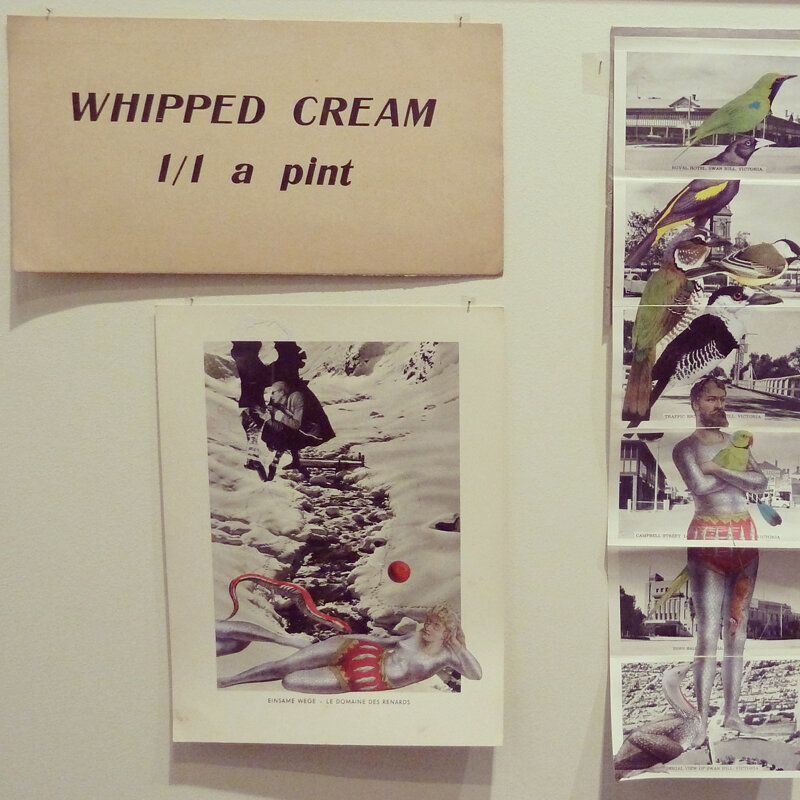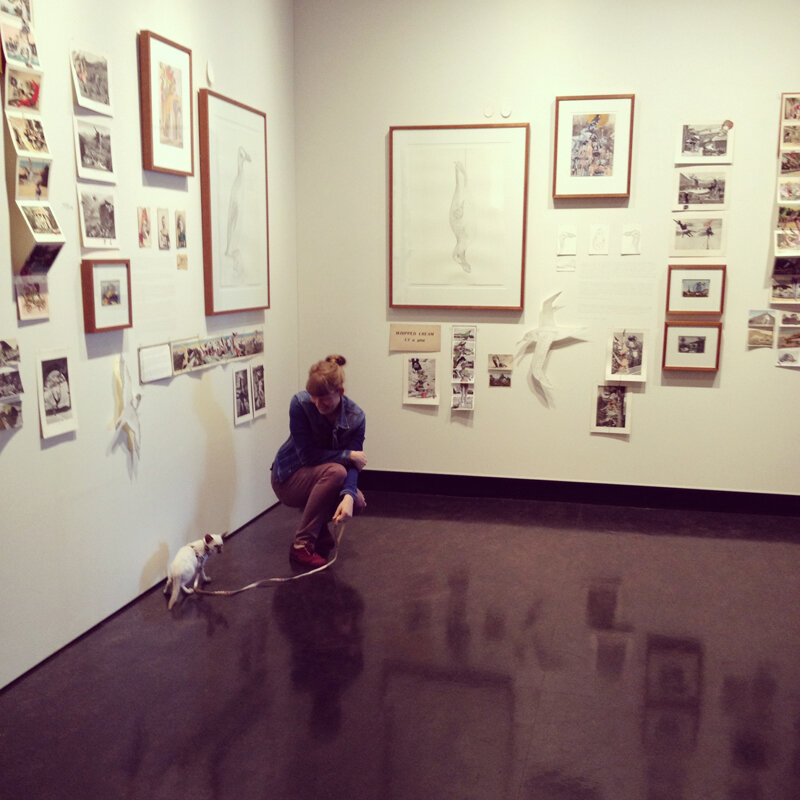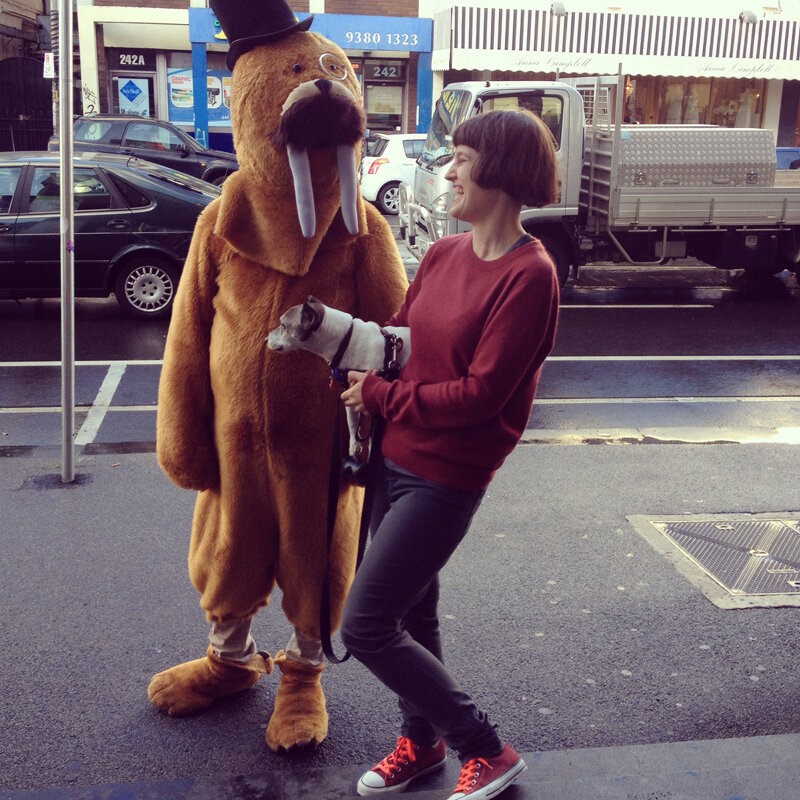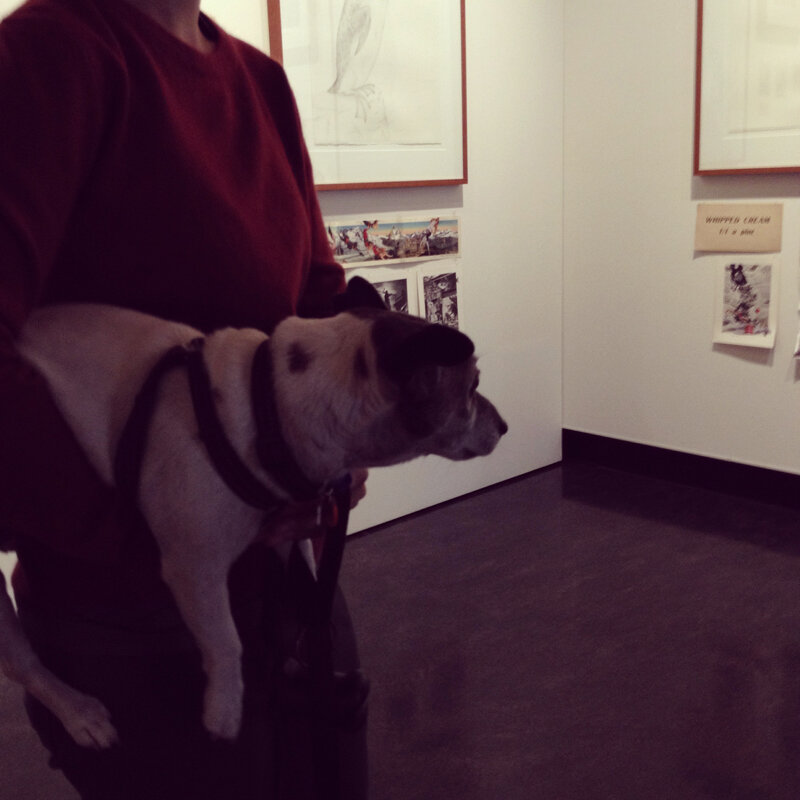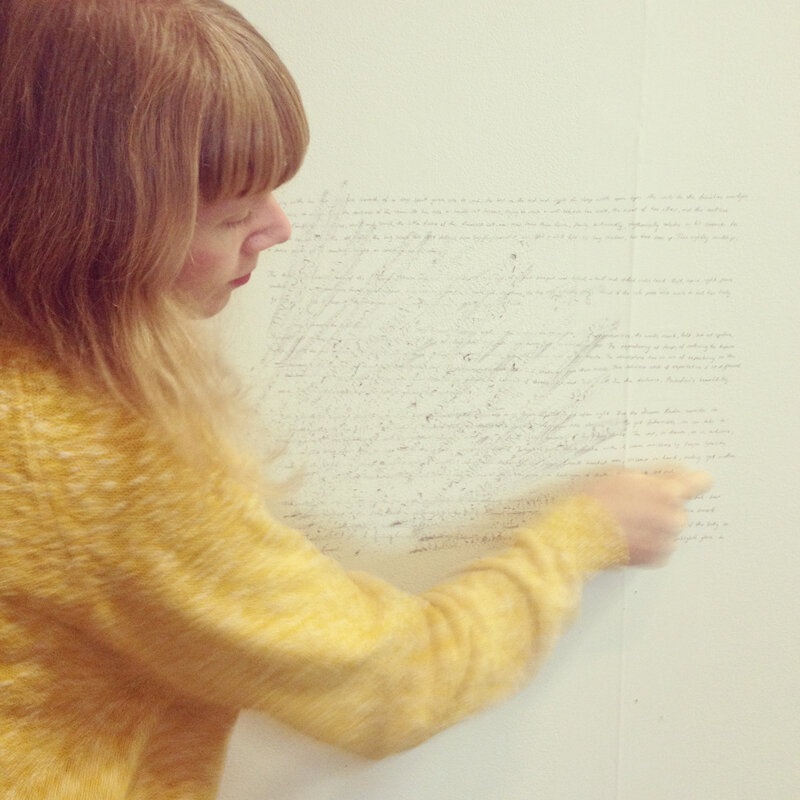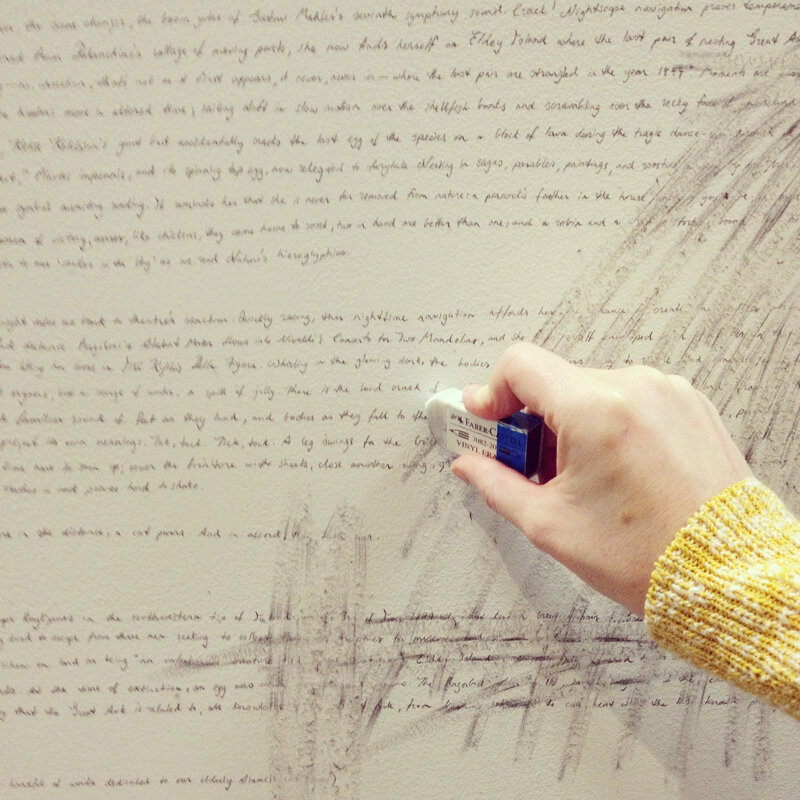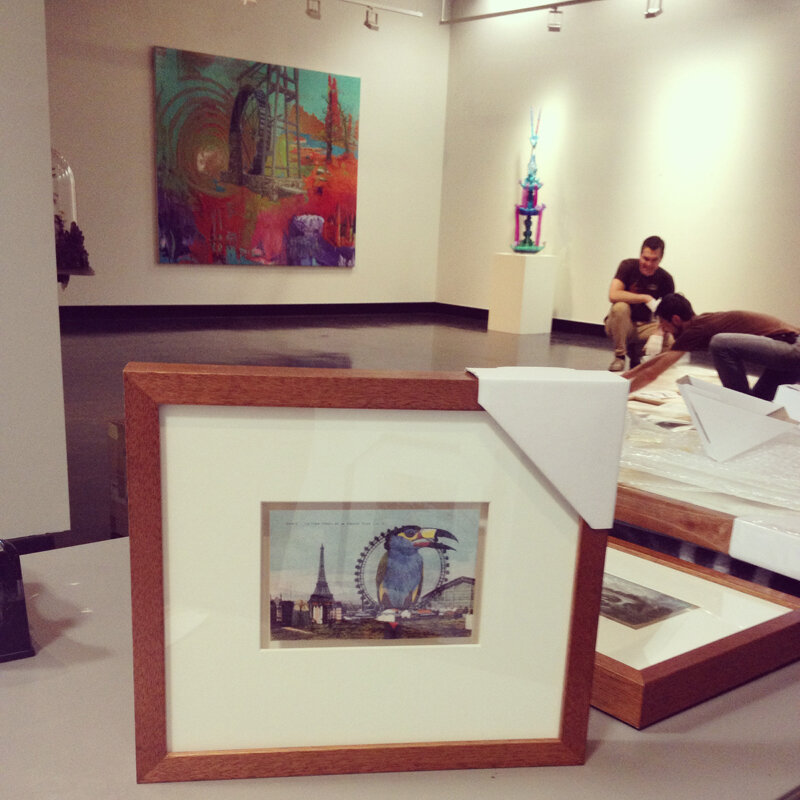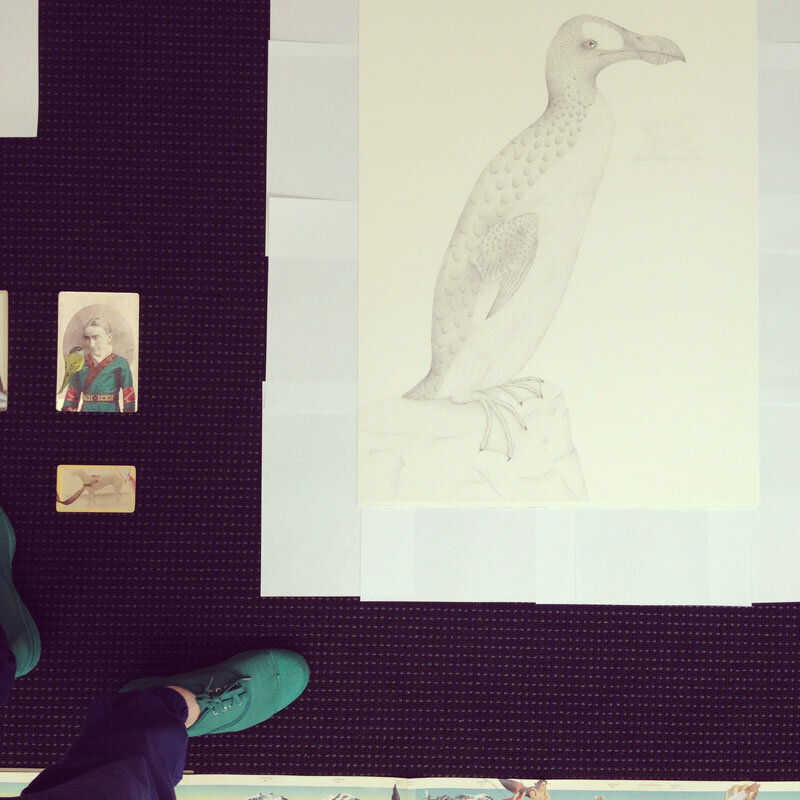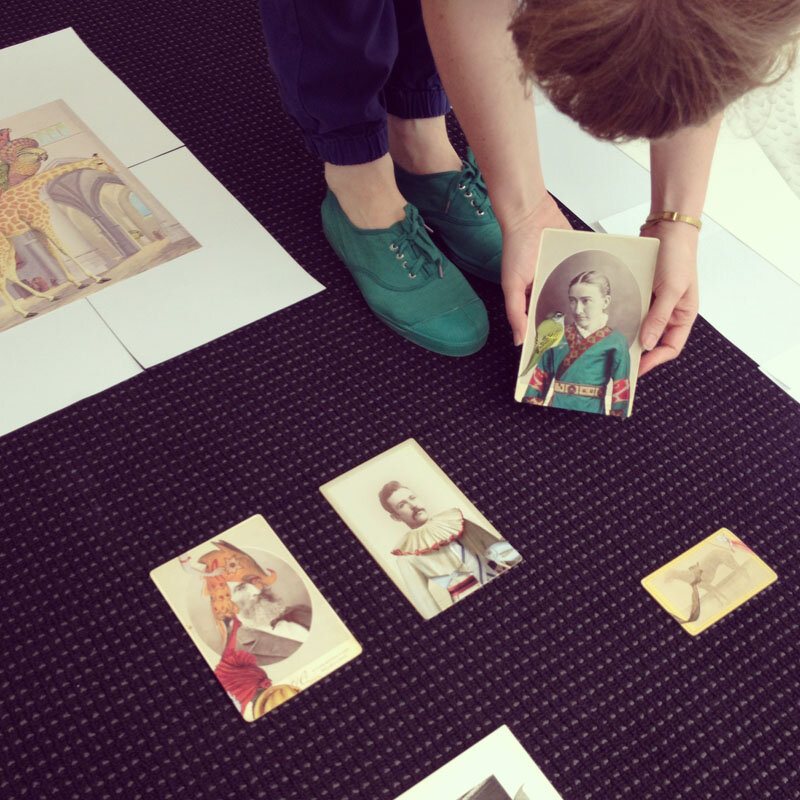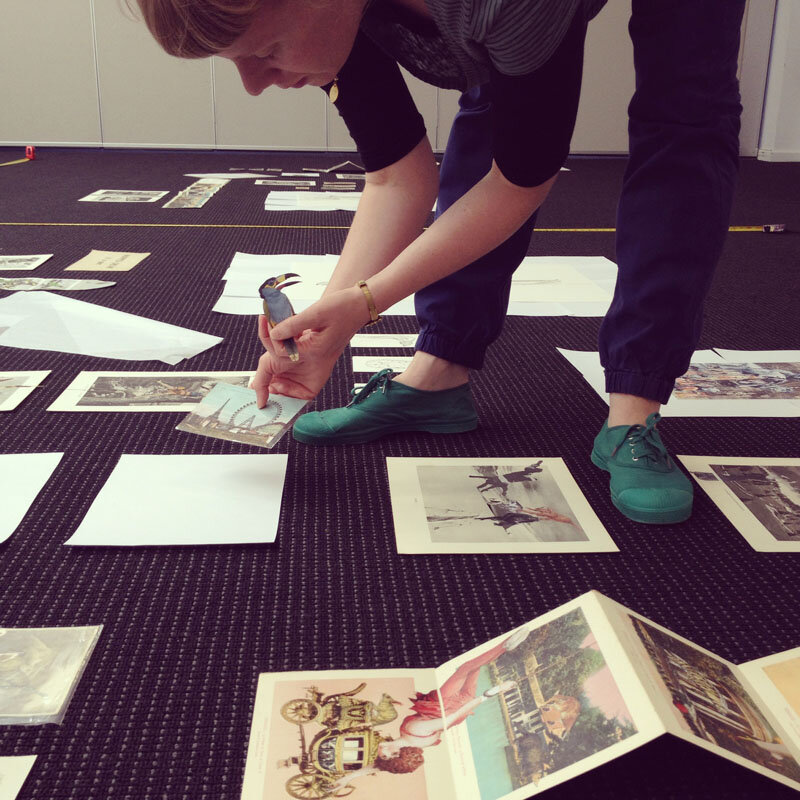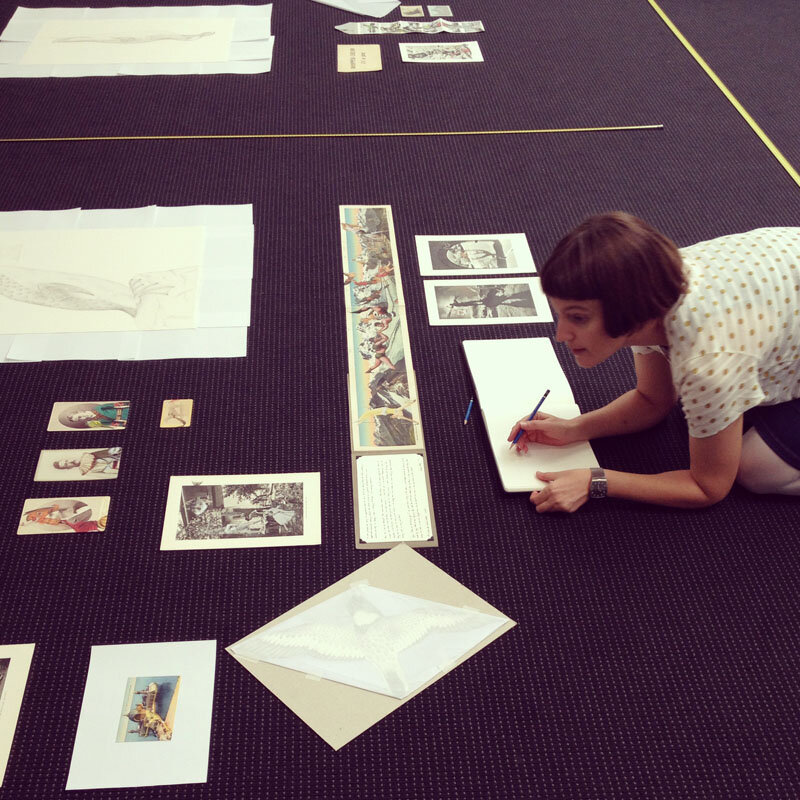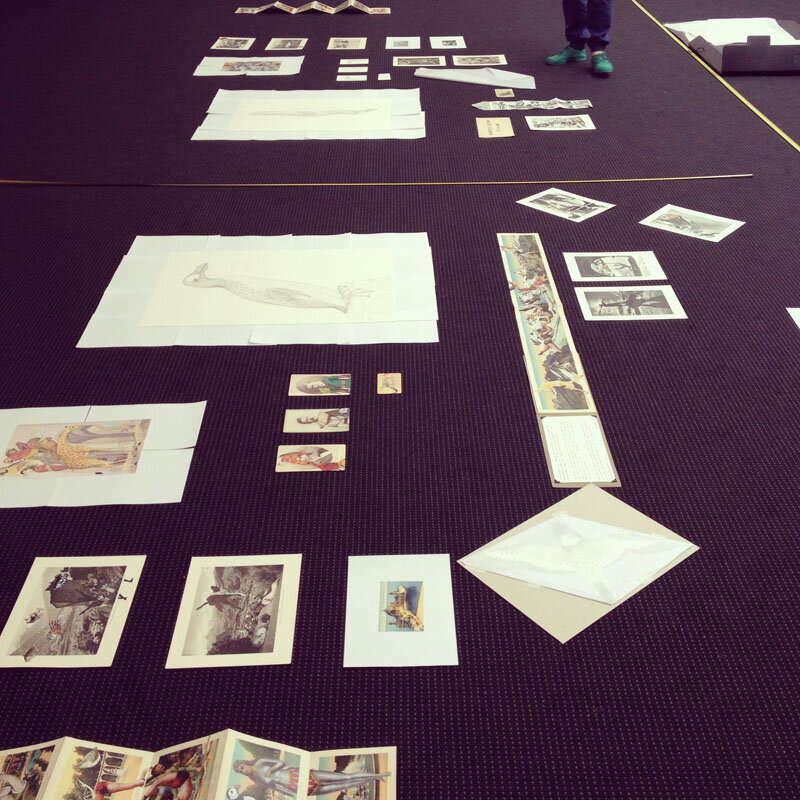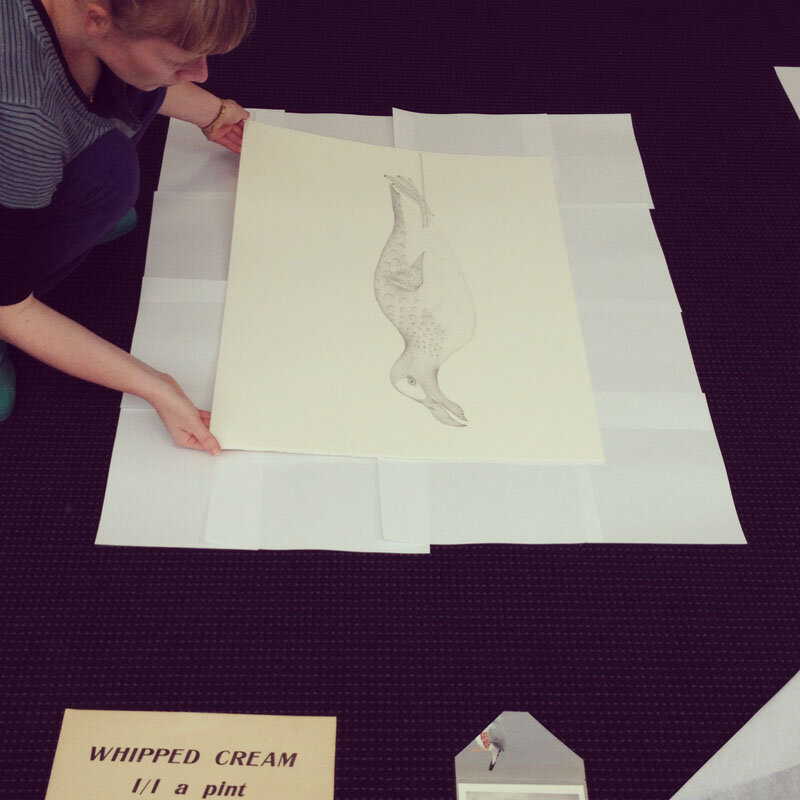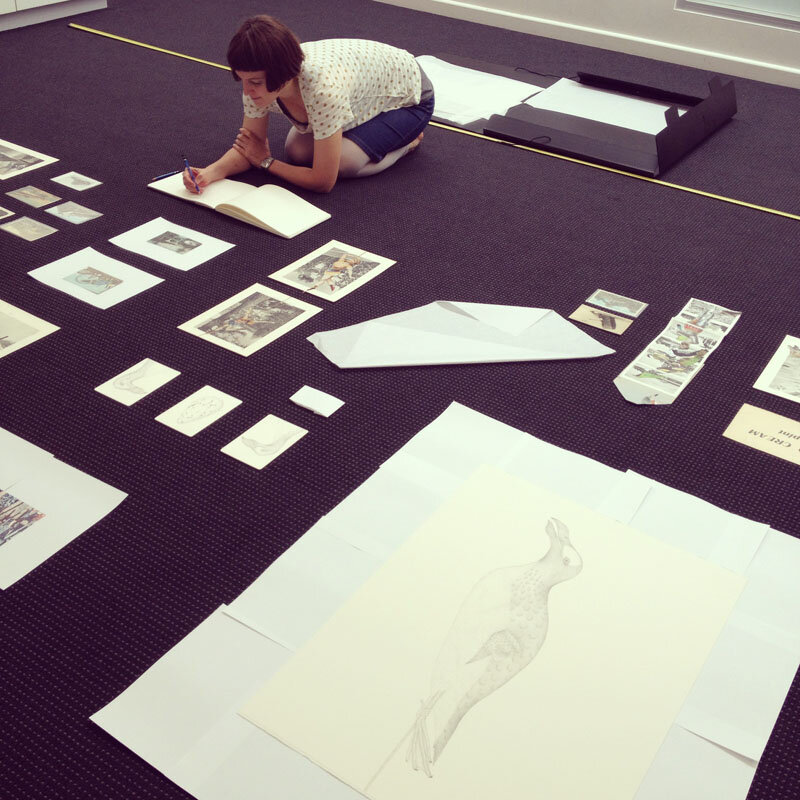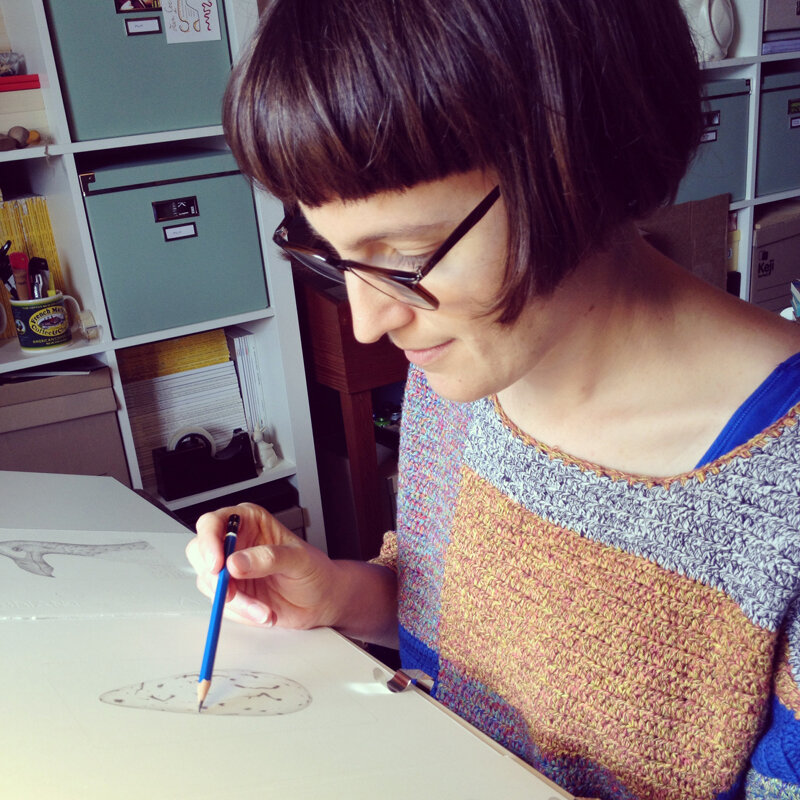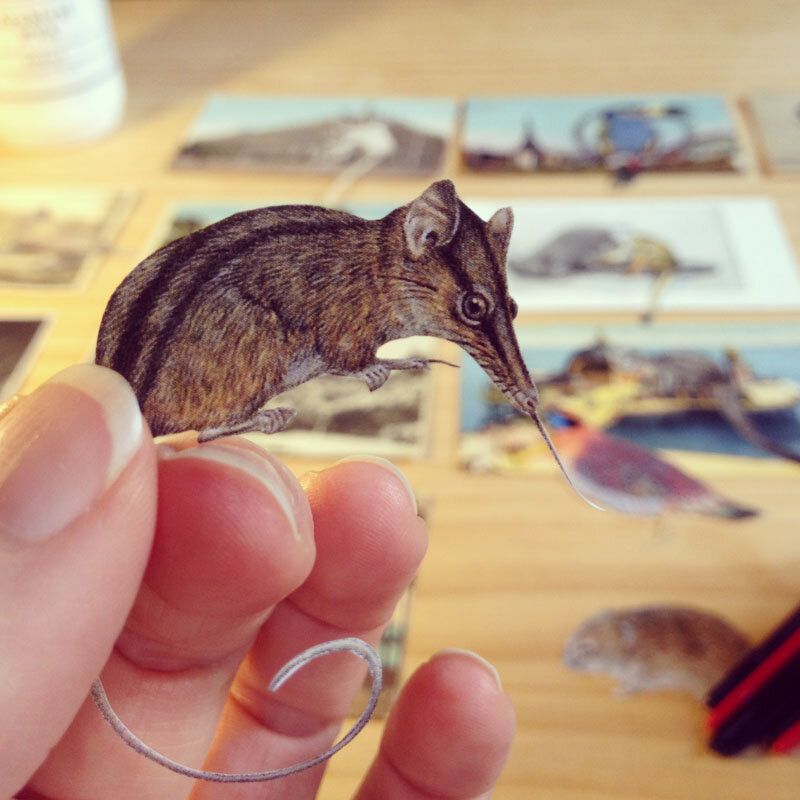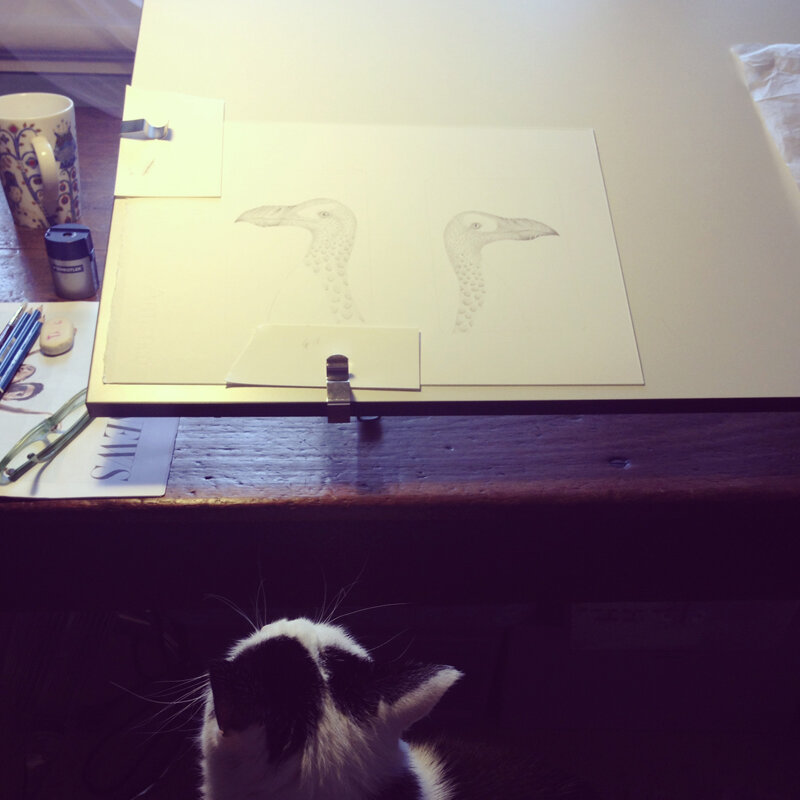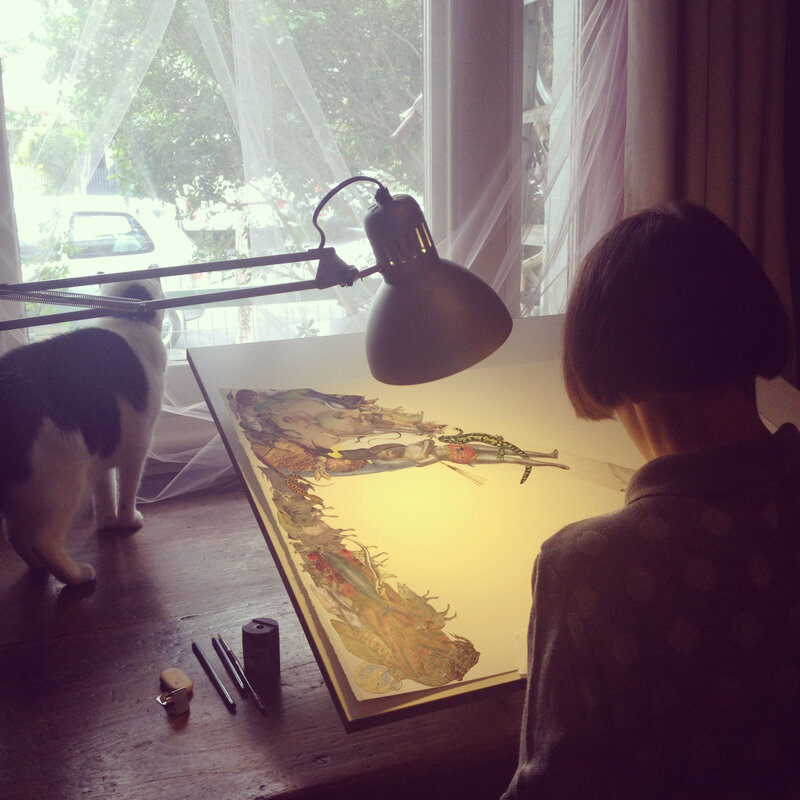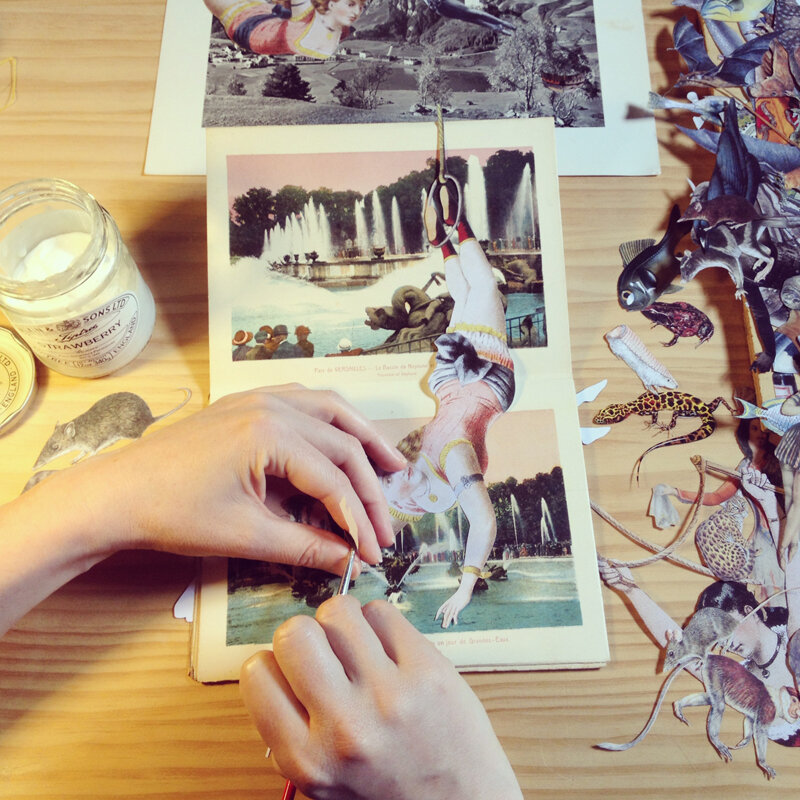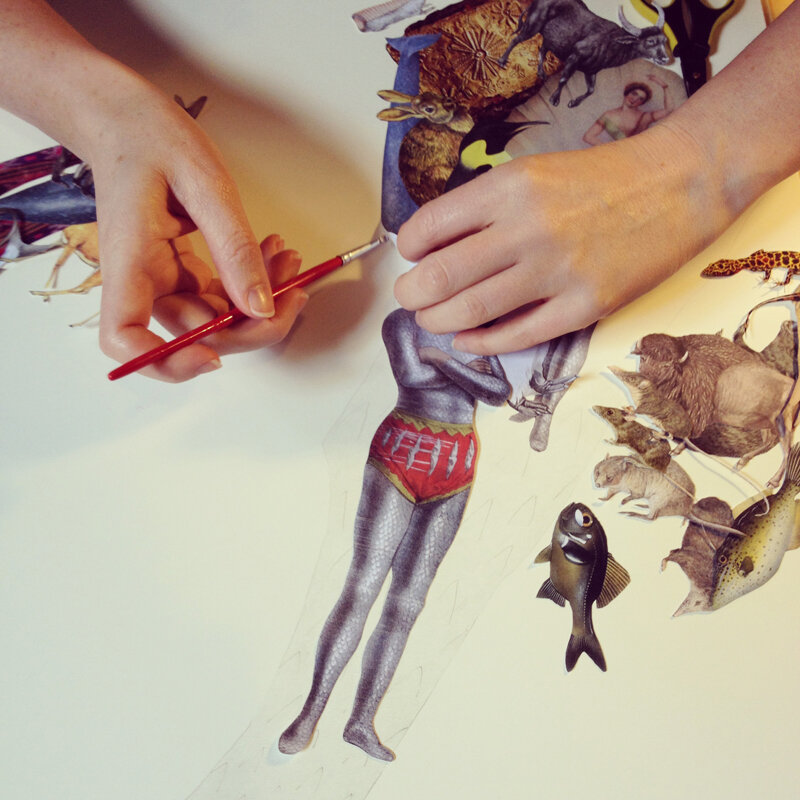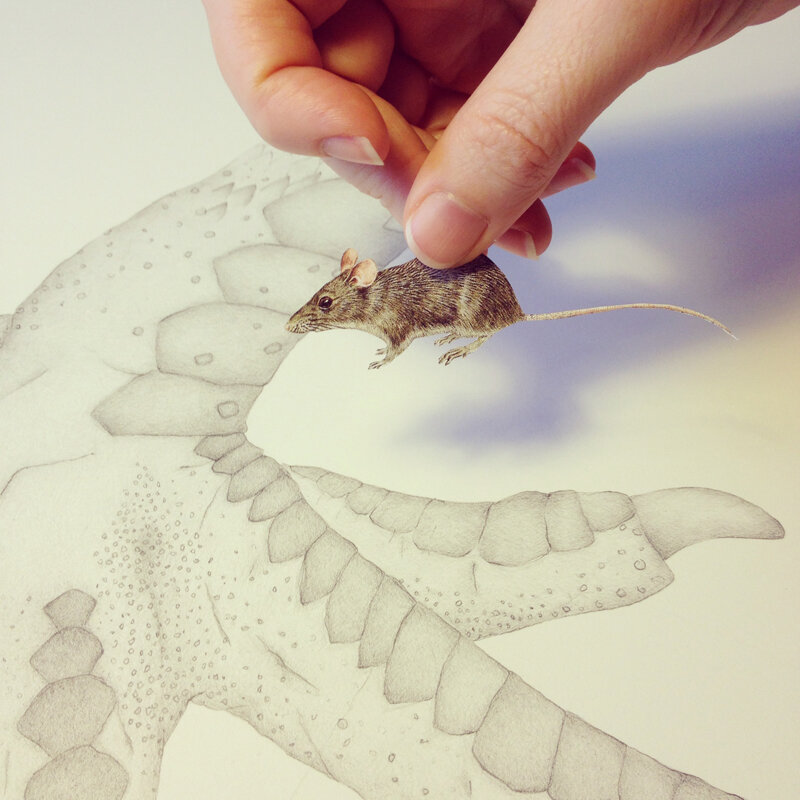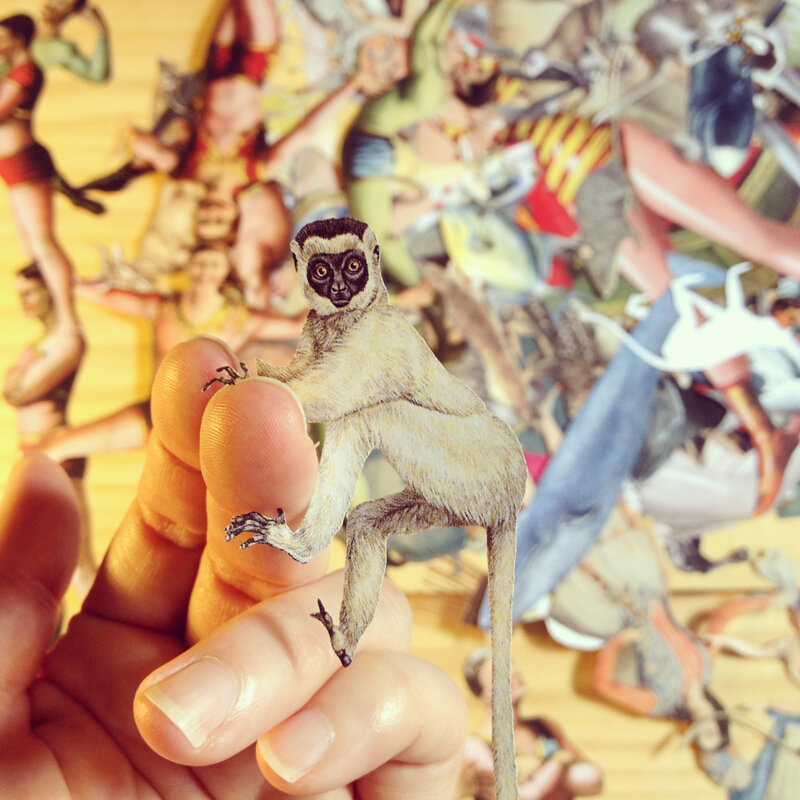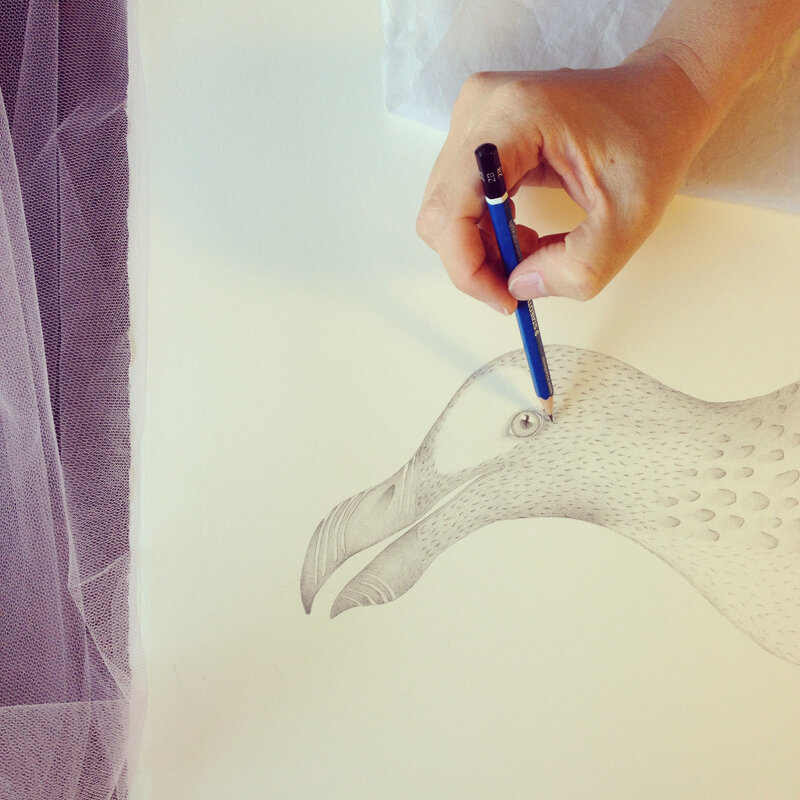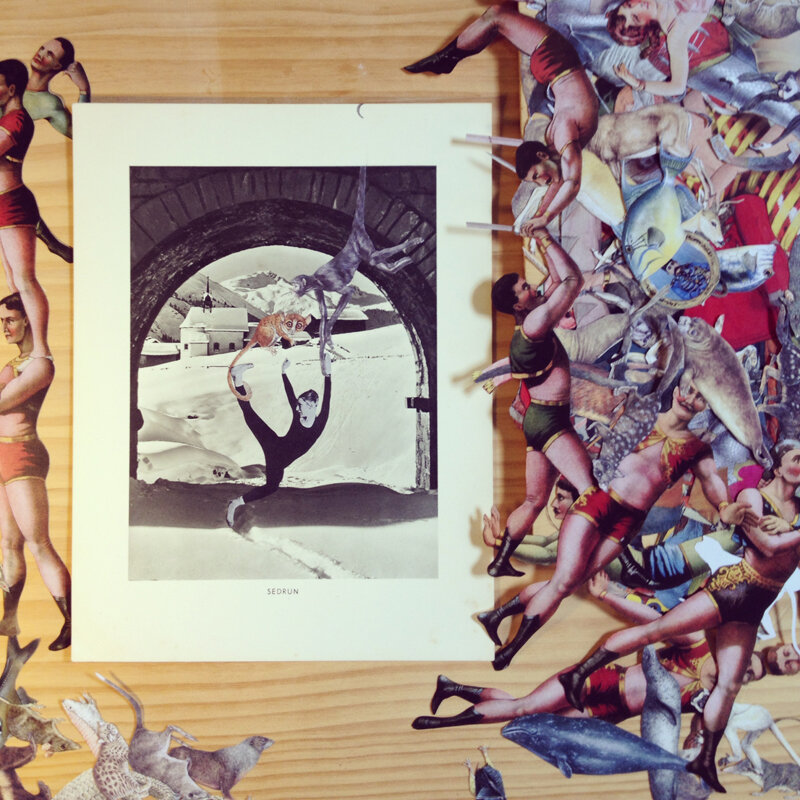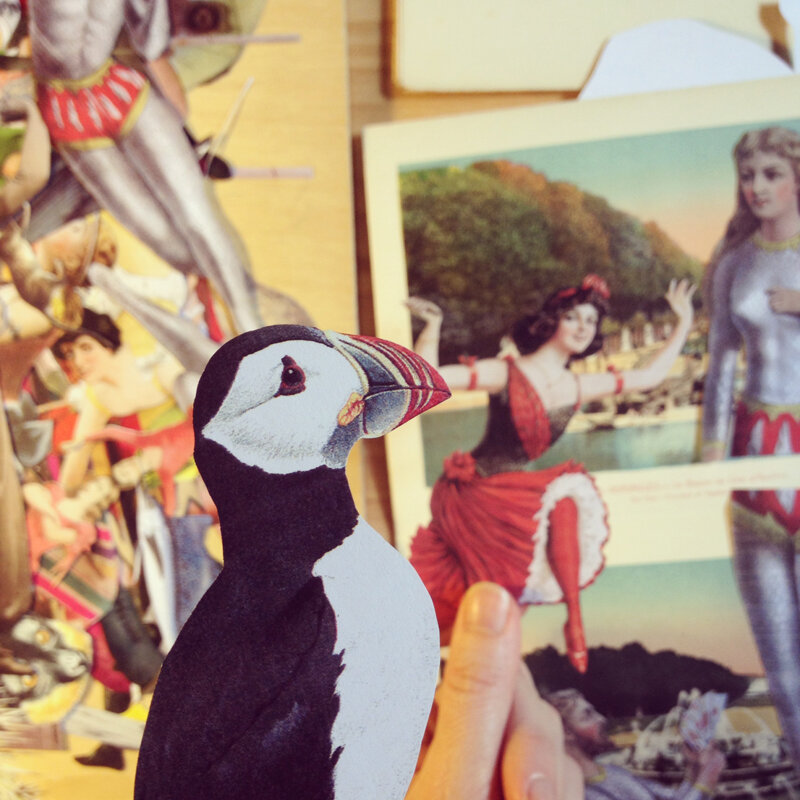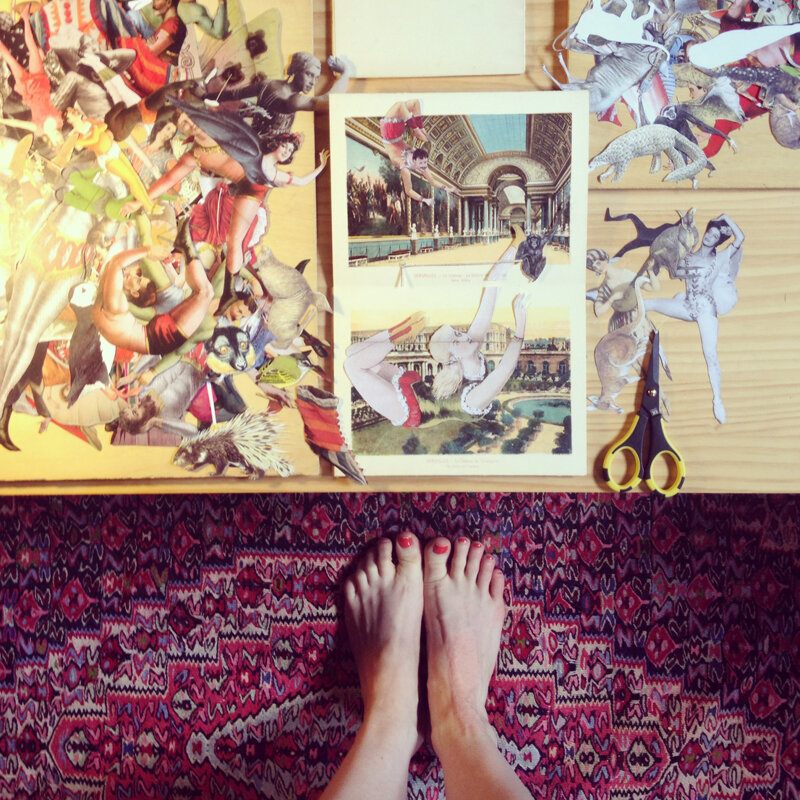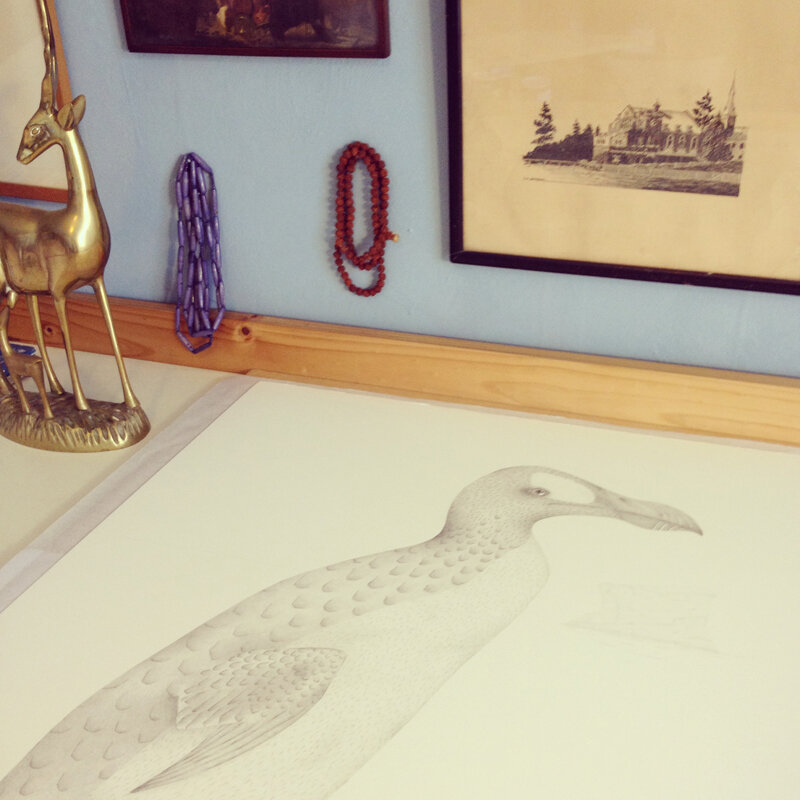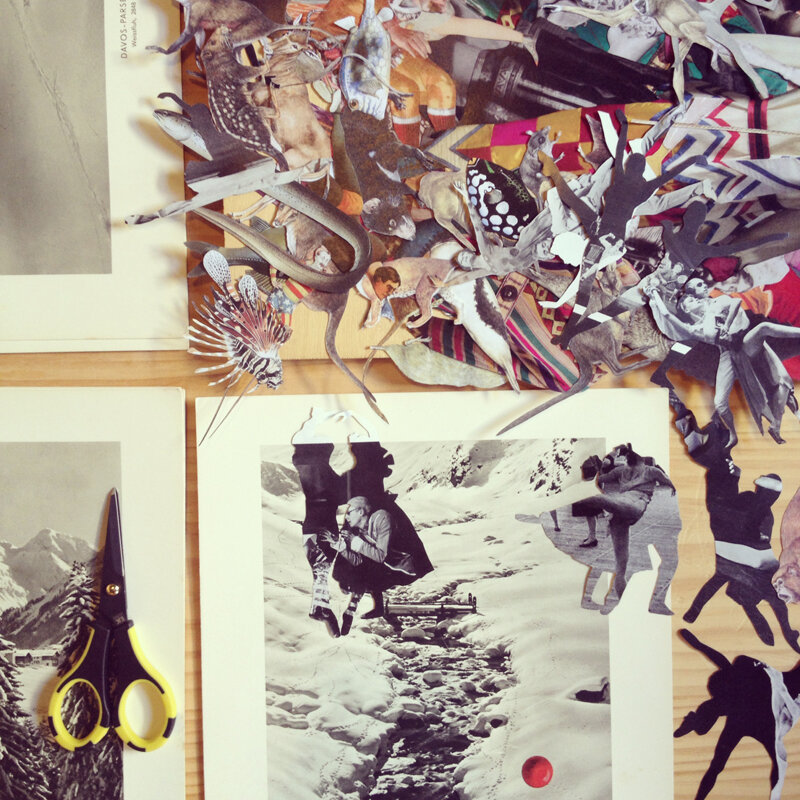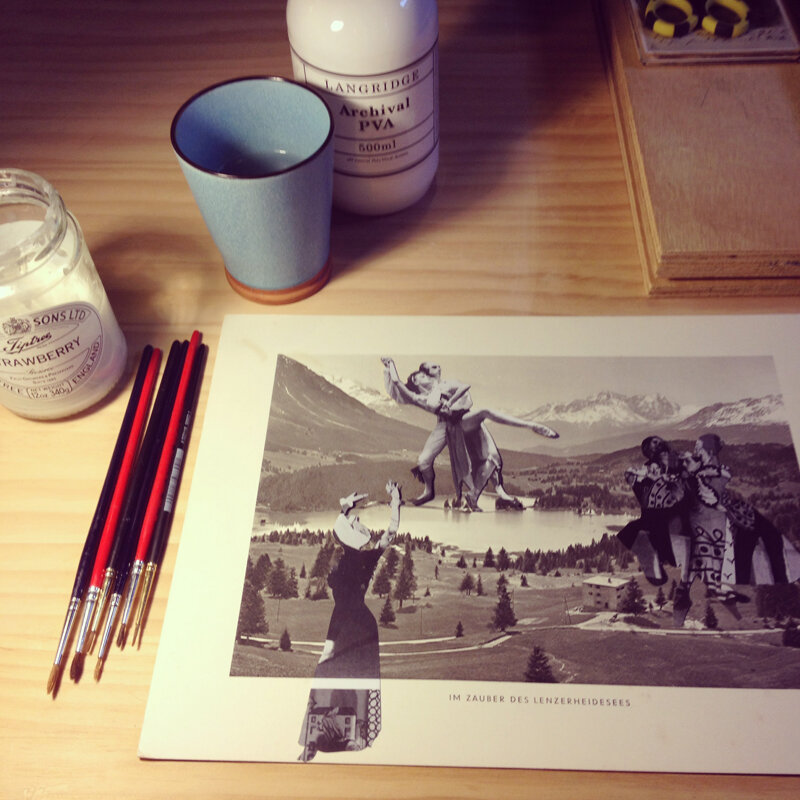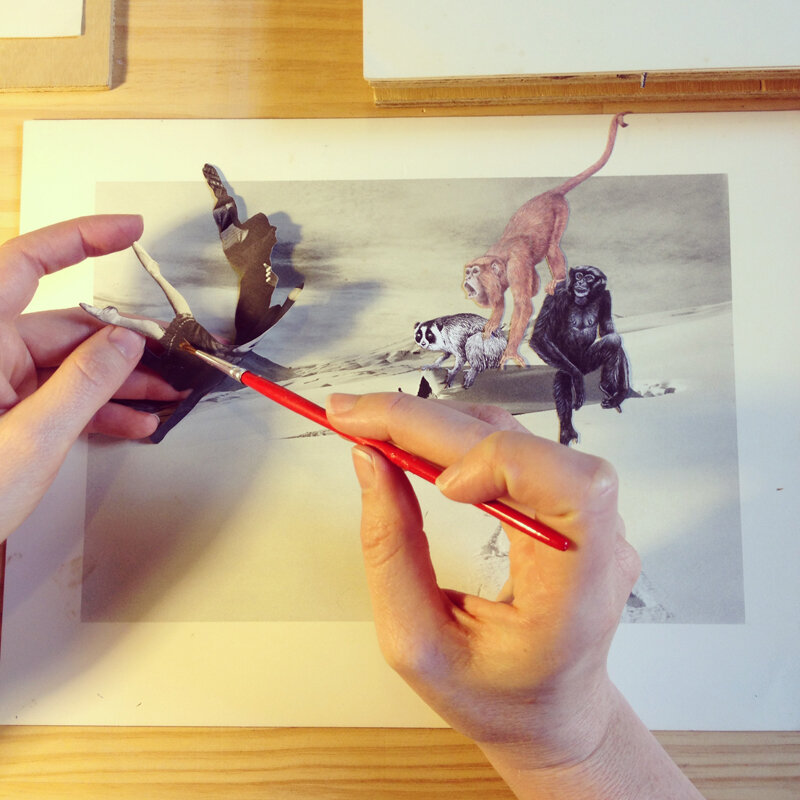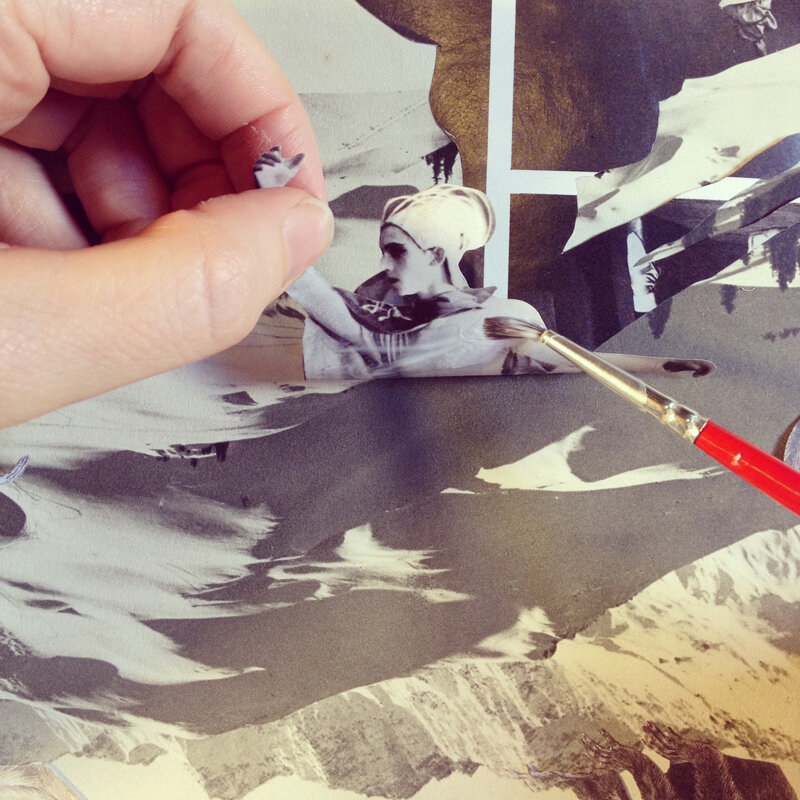IN YOUR DREAMS
Dusk films over mirror, the scene changes, the boom gates of Gustav Mahler’s seventh symphony sound.
Gracia Haby & Louise Jennison
In Your Dreams
2014
Curated by Edwina Bartlem & Victor Griss
Friday 9th of May – Sunday 8th of June, 2014
Counihan Gallery, 233 Sydney Road, Brunswick
In Your Dreams
STEPHEN BUSH, MICHAEL DOOLAN, DANIEL DORALL, WILLIAM EICHOLTZ, GRACIA HABY & LOUISE JENNISON, DYLAN MARTORELL, STEAPHAN PATON, KATE ROHDE, KATE SHAW, SALLY SMART, VAN SOWERWINE & ISOBEL KNOWLES, YANDELL WALTON, SHARON WEST
In Your Dreams explores fantastic worlds and imaginary creatures through a range of media including sculpture, diorama, painting, printmaking, collage, artist’s books, video projection, ambient sound and interactive artwork. It engages the senses, creating an environment to spark the imagination of children and the young-at-heart. Many artworks have whimsical or surreal qualities of dreams, fairy tales and fables, and like many folkloric tales, occasionally a dark or cautionary quality. Ideas of cuteness, reality, history, power and belonging are introduced through various formal and symbolic devices. Several artists play with scale drawing the viewer into a miniature world overshadowed by colossal creations, generating awe and wonder. Alternatively the viewer can play the role of the giant, observing the drama and curiosity of a Lilliputian world.
Counihan Gallery
●
To accompany our installation of new drawings, collages, artists' books, and text, we have also made a 32 page zine, In your dreams, blurred and distinct. Hand-stitched with black thread, it is an edition of 100.
The fantastical seven,
Thank-you to Elaine and Peter Haby, Susan and John Jennison, and Georgia Cribb for all their help and encouragement. Thank-you to Des Cowley and Francesca Jurate Sasnaitis for their editorial eyes and minds most sharp.
﹏
RELATED POSTS,
I SLIPPED INTO REVERIE
IN YOUR DREAMS, BLURRED AND DISTINCT
IN YOUR DREAMS, WITH A MUFFLED VOICE
RELEGATED TO THE PAST
THE PAST PARTICIPLE OF DO IS DONE
EQUIVALENT TO THE SUM OF THREE AND FOUR
ALL THE WORLD LOVES A SOUVENIR
AWAKENING FROM DREAM SOON
DRAWING TO A CLOSE
WHIRLIGIG
IN YOUR DREAMS, WITH A MUFFLED VOICE
GOODBYE DEAR OMAR
THESE DAYS, IN NINE FRAMES
A STATE OF BEING PLEASANTLY LOST IN ONE'S THOUGHTS
DEAR OMAR
A SOOTY ALBATROSS (PHOEBETRIA FUSCA) FROM MY DREAMS
ONE LITTLE HONEY POSSUM
THE GREAT AUK, PINGUINUS IMPENNIS
A LITTLE TIME TO DREAM AND PLAN
PATTERN
LATELY...
READING SOMETHING INTO IT
WHAT IS THIS WORK LIFE BALANCE YOU SPEAK OF?
"CREATING BEAUTIFUL MOVEMENTS IS OFTEN QUITE A CLUNKY JOURNEY..."
AND ZARAFA KEPT WALKING
JANUARY'S BEAUTIFUL PATTERN
In your dreams, blurred and distinct
As part of our installation of work created especially for In Your Dreams (2014), a handful of words dedicated to our elderly Siamese cat Omar written on the gallery wall
Gracia Haby
2014
In Your Dreams catalogue PDF
Carrying with her the protective warmth of a day spent given over to work, she lies on the bed and waits for sleep with open eyes. She waits for the familiar smudges of furniture to emerge from the darkness of the room. At her side, a small cat burrows, trying to make a well between her waist, the crook of her elbow, and the mattress beneath. Clockwise, clockwise, round and round, the little frame of the Siamese cat, now more bone than flesh, slowly, awkwardly, rhythmically rotates in his search for sleep, but he cannot settle. At night, the long black cat that follows him by day cannot be seen, but is still felt: his long shadow, his time soon up. This nightly courtship, a dance performed as comfort sought, as constant as the stars.
The twisted bedclothes tell of the fitfulness of limbs extended and tucked in close only to be extended and tucked in once more, of pillows plumped and folded in half and stuffed under head. Left, supine, right, prone, comfort pursued and sometimes found, sometimes not. And now in crumple of linen and acceptance, she lies still listening to the sound of the cat’s purr and waits to feel his body go soft and yield to sleep. A little black nose near her own, minutes pass in stillness, sleep will come.
In the semi darkness, the kaleidoscopic patterns of the day augment themselves overhead. The chatter, the noise, the missed opportunities, the words meant, felt, but not spoken, the tasks left undone, swim overhead until the quiet cloak of sleep falls and takes them away, all consciousness lost. The expectancy of sleep, of entering the dream state, mirrors the soft welcoming hum of conversations heard in those intoxicating moments before the curtain rises at the theatre. The atmosphere has an air of expectancy as the audience awaits the tease in the wings that will surely come. From the orchestra pit, brass and woodwind flex their muscle. This delicious state of expectation is no different to the liminal place between falling asleep and dream state; to her it bears the hallmark of theatre. Tick, tock. Tick, tock. In the distance, Prokofiev’s beautifully eerie time-keeping score, and the twelve chimes of midnight.
Falling asleep is as hard to chart as its fuzzy and changeable borders. The map is in constant flux, night after night. But the Dream Realm rewards its explorers and when the curtain rises, revealing signposts from the day tied to something altogether more obscure and not yet fathomable, she can take to the stage and soar, weightless. It will be some time before she must wake to house lights, conscious of her heavy limbs. For now, in dream, as in audience, she can feel what it is like to step inside the melodic sweeping circles of Tchaikovsky’s Swan Lake with the swan maidens by frozen lakeside ready to take flight, and perform Odile’s thirty-two fouettés; and over in the wings, spy Joseph Cornell hunched over, scissors in hand, making yet another boxed-world gift for Tamara Toumanova. Odette’s mad beating of her wings at the windowpane, a harbinger of death, the ultimate lost soul.
Or perhaps this time she will take the role of one of Balanchine’s four different temperaments — melancholic, sanguinic, phlegmatic, choleric — and feel how movement is weighted to the floor even in elevation, as though some giant magnet below the stage was being held in place. Perhaps Balanchine himself will wield the giant magnet, which enables that off-centre tilt, the pelvis thrust forward and the feet flexed. The placement of each part of the body is rendered both perfect and odd. The leap from her usual place in the hubbub of the stalls to the stage, an easy feat behind closed eyelids, and the pursuit of the spotlight’s glare is momentarily courted.
Dusk films over mirror, the scene changes, the boom gates of Gustav Mahler’s seventh symphony sound. Crack! Nightscape navigation proves temperamental. From Odette’s frozen dream state, unfastened from Balanchine’s collage of moving parts, she now finds herself on Eldey Island where the last pair of nesting Great Auks are having their portraits drawn for posterity — no, correction, that’s not as it first appears, it never, never is — where the last pair are strangled in the year 1844*. Moments are suspended as the scene unfolds, as if on stage. The hunters move in altered time; sailing aloft in slow motion over the shellfish banks and scrambling over the rocky face of an island shaped like a ‘sack of flour’. In the background, Ketill Ketilsson’s giant boot accidentally cracks the last egg of the species on a block of lava during the tragic dance-cum-skirmish off the coast of Iceland. The “non-flying flatfoot”, Plautus impennis, and its spinning top egg, now relegated to fairytale. Nesting in sagas, parables, paintings, and roosting in song by day, buried in dream by night, the bird appears to her as symbol awaiting reading. It reminds her that she is never far removed from nature: a peacock’s feather in the house, unlucky you’ll be; an eagle, synonymous with triumph, Agamemnon’s omen of victory; curses, like chickens, they come home to roost; two in hand are better than one; and a robin and a wren misfortune bound. This is wearing to the bone, this witness ride, adding turrets to our ‘castles in the sky’ as we read Nature's hieroglyphics.
Crack! Black night takes us back to theatre’s sanctum. Quickly racing, this nighttime navigation affords her the chance to create one endless performance of her sole devising. In the muffled distance Pergolesi’s Stabat Mater flows into Vivaldi’s Concerto for Two Mandolins, and she finds herself enveloped by a black curtain that folds its giant fabric arms about her before letting her loose in Jiří Kylián’s Bella Figura. Whirling in the glowing dark, the bodies of the dancers seem to ripple and convulse, as if for one moment their bodies contain not organs, but a surge of water, a spill of jelly. There is the loud crack of a thigh being slapped, to echo the Eldey Island scramble. It is followed by the distinct and familiar sound of feet as they land, and bodies as they fall to the stage floor, part artifice, part universal truth, part tabula rasa upon which the mind may project its own meanings. Tick, tock. Tick, tock. A leg swings for the briefest moment like a pendulum oscillating back and forth from a central point, signalling time here is soon up; cover the furniture with sheets, close another wing, grow smaller. Unyoke, unhook; time soon to say goodbye. In every little thing, a reference to mortality crashes in and proves hard to shake.
Somewhere in the distance, a cat purrs. And in accord, they turn over.
* Off Cape Reykjanes on the southwestern tip of Iceland, on the 3rd of June 1844, the last known breeding pair of Great Auks were strangled and their sole egg smashed as they tried to escape from three men seeking to collect them as trophies for museums and private collectors. Alfred Edmund Brehm describes the flightless Great Auk when on land as being “an unfortunate creature tied to one spot”, and Eldey Island was commonly referred to as a “sack of flour” dusted with white seabirds. At the time of extinction, an egg was worth six thousand crowns. The Razorbill, Alca torda, is the only one of the genus’s twenty-two species alive today that the Great Auk is related to, all knowledge of the Great Auk, from breeding behaviour to call, went with the last known pair.
Performances referenced:
Both Stephen Baynes and Graeme Murphy’s choreography for Swan Lake (2012 and 2002), Jiří Kylián’s Bella Figura (1995), and George Balanchine’s The Four Temperaments (1946), as performed by The Australian Ballet.
Music referenced:
Gustav Mahler’s Symphony No.7, Giovanni Pergolesi’s Stabat Mater, Sergei Prokoviev’s Waltz-Coda and Midnight from Cinderella, Pyotr Il’yich Tchaikovsky's Swan Lake, and Antonio Vivaldi’s Concerto for Two Mandolins.
Books sighted, both directly and indirectly, in the above:
Anita Albus, On Rare Birds, translated from the German by Gerald Chapple, University of New South Wales Press Ltd., Australia, 2011
Charles Dickens, Bleak House, Penguin Classics, Penguin Books, London, 1996
Graeme Gibson, The Bedside Book of Birds: An Avian Miscellany, Bloomsbury, Great Britain, 2005
Patrick Hamilton, Twopence Coloured, Faber Finds, Griffin Press, Australia, 2011
Katherine Mansfield, The Collected Stories, Penguin Classics, Penguin Books, London, 2007
John Williams, Stoner: A Novel, Vintage Classics, Random House, London, 2012
Tales of the German Imagination from the Brothers Grimm to Ingeborg Bachmann, selected and translated by Peter Wortsman, Penguin Classics, Penguin Books, London, 2012
The final polish (accompanied by Scarlatti’s Keyboard Sonata in E Major)
In Your Dreams
Edwina Bartlem & Victor Griss
Exhibition Curators
2014
Imagination is a powerful faculty, and it is something that artists and children have in common and in abundance. It is central to visualisation, creative thought and problem solving, and is an antidote to the mundane.
One of the wonderful opportunities of parenthood is to rediscover the world through the eyes of a child and to witness the apparently limitless imagination and fascination they possess. For them, day-dreaming, storytelling and spontaneous play occupy a privileged position in their lives, offering enrichmen and contentment. For an adult revisiting childhood, the occasion to think and create spontaneously, intuitively and without self-censorship can be revelatory, even life-changing. At some point as we mature, this ability to delight in serendipity and inventiveness is often lost, demoted, chided or forgotten.
Many artists, however, possess this great capacity for imagination and invite us into the fantastic and eccentric worlds that they conjure in their art. This comparison in not intended to diminish artists' creative practice to ‘child's play’. On the contrary, there is a high level of discipline, dedication and practice required to be a professional artist, and whimsical or playful artworks often belie the painstaking labours required to produce them. Regardless, artists share with children an aptitude for open-mindedness, re-presenting the world to us through another lens or transporting us into a whole new universe.
As the exhibition title suggests, dreams, imagination and fantasy are at the heart of this show. In Your Dreams features the selected work of fifteen contemporary artists who delve into fable, folklore, mythology, alternative realities and dream worlds in their creative practice. The exhibition has been curated to engage the imagination and curiosity of children and the young-at-heart, and it seeks to provide opportunities for adults and children to have an equal and shared experience of looking at art together.
Influential art movements like Surrealism, Dada and Expressionism have obviously inspired a number of artists in the exhibition, as well as transcendental or artificial forms of consciousness, the realms of psychoanalysis and dream symbology. Some works invoke nonsensical, absurd and hallucinogenic visions that have the potential to attract or disturb the viewer and several even verge on the nightmarish. As in many folkloric tales, appearances can be deceptive and dark undercurrents sometimes give them a number of possible interpretations. Beneath the seductive and visually appealing surface of some works are more challenging themes. Ideas of cuteness, beauty, power, control, transformation and belonging are often explored and questioned through the use of size, scale, formal and symbolic devices.
Like a dream, the imagery or symbolic language in which these works communicate to the visitor is not precise or fixed. Elements and meanings can be slippery, associative, seemingly arbitrary and often surprising. Like its namesake, this exhibition invites visitors to embrace the domain of the unexpected, of intuition, uninhibited creativity and open-ended possibilities.
Whatever paths open, we hope at the end of your journey In Your Dreams will stay with you.
●
Gracia Haby and Louise Jennison tend to work collaboratively on creative projects using paper based forms including collage, artist books, zines, printmaking and installations. Hand assembled collage, using paper, scissors and glue is a favoured medium of the artists, but they also work with digital collage — a technique that is particularly advantageous for artist books and zines. Vintage images are often juxtaposed in Haby and Jennison's collages and artist books, which give them a nostalgic and intriguing quality. As if set in a nonsense literary world like Lewis Carrol's Wonderland, Haby and Jennison upend bizarre new scenarios. Theatrical images feature heavily in this installation, including costumes from the Ballet Russes and Victorian images of acrobats. These fantastic and carnivalesque scenes suggest a narrative, but left open-ended, remain a puzzle for the viewer to solve. Animals are recurring motifs in Haby and Jennison's work and these creatures are often giants within the frame, at odds with cities, theatres and constructed environments they inhabit. Are they inverted metaphors for human relationships with the natural world? Or, are they allegories for how we try to govern ourselves and conform to society’s expectations?
Gracia Haby, page detail from the artists' book Tumbling lightly, tumbling fast (II), 2014, artists book
Show of the Week: Sweet Dreams
Ramona Barry
handmadelife
12th May, 2014
....
Opened last week is a terrific group show In Your Dreams at Counihan Gallery in Brunswick, in the delightful City of Stonnington. Curators Edwina Bartlem and Victor Griss have brought artists together that dive head first into the surreal, the imagined and yes of course dreaming and perhaps nightmares too.
We were so impressed that the text panels had a sort of ‘parental guidance’ edition beneath it. Giving the show a clever education trail that can help parents and teachers guide smaller peeps through the show. This is also a great way to read work as an adult audience. When you see so much you can often can become a bit flip or jaded so having these text panels push your attention in different ways is a good thing.
A highlight for us was the well considered installation by the hardest working artists we know. Gracia Haby and Louise Jennison's corner of wonder includes drawings, collages, hand written musings, accordion books and more formal framed work. They are the ideal duo to transport us into a dream world populated by dancers, circus performers and endangered species. In our dreams these two get to make a film with Wes Anderson!
In Your Dreams
Sama Hugo
ArtsHub
19th May, 2014
Dreams, fables and imaginings are often regarded as childish distractions from the real world. In this exhibition at Counihan Gallery in Brunswick, fifteen contemporary artists delve into the imaginative world of fairy-tales and altered realities.
....
The strange associations that spring from dreams and the subconscious mind serve as creative inspiration in artistic movements like Surrealism and Dada. Gracia Haby and Louise Jennison operate in this mode playfully using a myriad of elements in their installation. Collages of nostalgic images of animals, circus performers, postcards, drawings and found objects are combined in whimsical and uncanny ways. Exotic fish float through sun-drenched valleys while a hyena guards the steps of the Temple of Love at Versailles.
....
The curatorial theme of In Your Dreams is one that children will respond to, and for this reason there are didactic panels specifically addressing a younger audience. For adults, the exhibition is a chance to rediscover the stories of childhood and think about their continued significance.
Rating: 4 ½ out of 5 stars
Daring Adventures in Collage
Q&A with Mati Rose McDonough for her guest interview series conducted as part of her Daring Adventures in Collage 5-week e-course
May 2014
Collage is the ultimate exercise in daring. As an artform, collage is all about gathering inspiration, embracing imperfection, and transforming the mundane into the extraordinary. Unpredictable by nature, collage challenges our inner critic as well as the inner choreographer who wants everything to be just so.
This 5 week e-course is not just about collage: it’s about building our daring muscles while practicing courage in art + life!
This course is for anyone who wants to strengthen their creative muscles, be inspired on a daily basis, step into their own brilliance + find their magic. Oh, and create unique, inspiring mixed media artwork incorporating beautiful collage!
Gracia Haby & Louise Jennison are practising artists based in Melbourne, Australia, who more often than not work collaboratively. Graduates of RMIT University (Haby: BA Fine Arts, with Hons, 1997; Jennison: BA Fine Arts, 1996) their artists’ books and other paper works can be found in the collections of the state libraries of New South Wales, Queensland and Victoria; the university libraries of Deakin, Melbourne, Monash, RMIT, Charles Sturt; and University of West England (UK); Artspace Mackay; Burnie Regional Gallery; Latrobe Regional Gallery; Mornington Peninsula Regional Gallery; National Gallery of Australia; Print Council of Australia; Tate (UK); and private collections. Their work has been commissioned for The Big Issue; NETS Victoria; Fjord Review; Australian Poetry; The World of Interiors (UK); ACE Hotel (USA); and UPPERCASE magazine (CAN) amongst others.
What are some of your inspirations?
Our inspirations are perhaps as they should be, many and varied, direct and indirect. Sometimes they will be courted, deliberately sought out. And always will it be apparent at the time. You see/feel/hear and are inspired. Inspiration is, if nothing else, always clear. It announces its arrival, whether brought about by a passage in a novel by a favourite or newly discovered author, or an exquisite visual seen in a book held in a collection, like Malherbe’s incredible Woodpecker compositions from Monographie des picidées 1861–62, held in the collection of the State Library of Victoria.
Fiction, natural history, film (in particular the full immersion we favour of the annual Melbourne International Film Festival where we treat ourselves, and perhaps render ourselves silly in the process, to seeing upward of fifty films in nineteen days), dance (in particular, The Australian Ballet’s annual season, and new works at Dancehouse or as part of a festival like the recent Festival of Live Art, amongst others), art then and now, and music, all of these things and more are inspiring.
For our most recent body of work (currently being exhibited at the Counihan Gallery in an exhibition called In Your Dreams, May though June, 2014), for example, the work is inspired by the choreography of Graeme Murphy, Jiří Kylián, George Balanchine et al., and it is about loss, of a Siamese cat of sixteen years, Omar, of species, of possibilities. It is about the body inevitably growing older and knees that creak. It is about all the things that are now only possible in our dreams. It is inspired by the short stories of Katherine Mansfield, which pull the rug out from underneath you, and the writing of Patrick Hamilton and John Williams for their sadness and the beautiful ordinary characters on the page. It is inspired by Dickens’ description of a character ‘building castles in the sky’ as much as it is by the muted colours of the costumes of the Ballet Russes. It is inspired by all the things we love.
You see, inspiration is found in everything.
Describe a rhythm of your week and/or a day in the life of you!
Varied, as per inspiration, if broken down and dissected day by day.
Our day starts at 6am and runs through until 12.30. Some days we can work solidly on our artwork, and other days are more splintered. Necessity dictates it so, and stamina too. Some days are broken up with the business side of things, a tight deadline, grocery shopping, and archiving what has been done. At present, as things are a little hectic, we are working from the top of the pile, getting the things that have to be done for tomorrow done first and anything else a bonus. This helps us get things done without getting into too great a panic. We tick things off our mental To Do list. So tonight, we will be, for example, making final preparations for a bookbinding and artists’ book workshop we are conducting tomorrow.
We both prefer working on our own work in the mornings or in the early evening, but you cannot always wrangle things that way. Sometimes days are chopped about a bit. Ideally, we prefer large uninterrupted spells, but then, doesn’t everyone? At present, as we have just taken down one exhibition of hand-coloured prints and postcard collages (Not Quite Sure, Port Jackson Press Print Gallery) and we have two current exhibitions to, for want of better word, promote (In Your Dreams, and Louise’s artists’ book, A Flight of Twelve Southern Hemisphere Birds, exhibited as part of the 2014 National Works on Paper). We are looking forward to getting back to the making side of things. We are looking forward to installing our new work in a new way in a new space (for we love this bit). We’re looking forward to the cycle repeating. Always.
What is something daring you’ve done lately?
Our whole career seems most daring, upon reflection, as it offers no guarantee and it provides no shortcut. We have kept plugging at what we love and thrown ourselves in headfirst. At the back of our minds, the feeling that if we stuff this up, it has all been in vain, and this is a powerful motivator when twinned with love for what you are doing.
Gracia Haby, In the borrowed costume of Petrouchka (c 1911), 2014, collage on ephemera
Who are some of your role models?
Those who are hard-working and true always make the best of role models, and they can be found in all fields.
Favourite art books? Music to listen to while painting?
For the main, we both like to work to classical music. It can be familiar or new to our ears, depending upon which stage we are up to. So, for example, if working on something brand new, I favour something I know on repeat, and that way it helps me keep tempo and in the same unbroken zone.
Our bookshelves are heaving with books, from art books to fill us with awe to reference books and dog-eared novels. They are all favourites, all inspiring, and all in some way filter into our work.
What are some of your favourite materials?
Paper is our chief love, our favourite material to work with, now and always.
And upon a paper support, Louise favours pencil (both grey lead and coloured pencil) and watercolour, and I, archival glue, applied thinly with a brush. To create all (non-digital) collages, I use a small, sharp pair of scissors so I can cut in close to the desired image and make the edge fluid. Once adhered, I soften this edge further with pencil.
Our tools of choice: 2B pencil, scissors, glue, brushes, bone folder, steel ruler, and drawing board.
Can you talk more about how you've incorporated these unique aspects/discoveries into your work?
When working with paper, we look to use a paper that will be of heavy enough weight to support collage (too thin, it will be too hard to flatten). Our collaborative artists’ book, As Inclination Directs, for example, which features collage and hand-coloured sunsets, is printed on 300gsm hot-press Fabriano.
When using found materials, there also needs to be room to add something to the scene, a need for a spot of collage in the first place, and the condition needs to be good. Some found material fashioned into an artists’ book is rebound by Louise, such as Tumbling lightly, tumbling fast (I) and (II). Others have their rusty staples removed and are rebound with thread.
Favourite colors as of late?
Gold. Greylead pencil. Colours with a slight muted earthiness to them.
How do you begin?
With an idea netted before it can escape. One can’t be too polite.
How do you side-step your inner critic?
They can be hard to muffle, those Inner Critics, but usually they don’t make their presence felt at the time of chasing an idea, making work or installing an exhibition, the three most enjoyable parts of the process when all feels golden and possible and exciting. The Inner Critic waits in the wings for a failed attempt at trying something new that results in a lot of then-deemed wasted paper, or an opening (sometimes), or the day after an opening (when, in cold light of day you dissect the parts and read them in an unfavourable way). Chiefly, once the work has left the studio. Once you’ve stapled your heart to the wall for all to see. But as with all things, there are exceptions to the rules. Sometimes when you do not feel like working or you feel small about ‘the silly things you do’ or ‘the same things you make’, perhaps this is the Inner Critic at work trying to dissuade you from brushing yourself off and starting over.
The Inner Critic can be silenced by continuing with your work (it is rendered small by Perseverance), by reading or trying something related that gently then nudges you back to work, and sometimes by stepping away and coming back with fresh eyes. The old maxims are oft true.
What does it feel like for you to be in the flow? Any suggestions for how to arrive there?
Wonderful. Utterly. Hours pass, but you are unaware of this, save for realising that night has fallen and you now need to close the blinds and cover the aviary. It requires focus, and depending upon which stage of the process you are at, sometimes it can disappear if interrupted too often (by phone calls and daily chores). When chasing an idea, the state is fragile as you are racing to record it all whilst it appears clear. Later, when polishing this idea, the state is more robust and can withstand pets mewing for a third breakfast or emails tapping at the door seeking entry. At this stage, you can dip in and out with relative ease.
To find this sensation, try to snare it with a few similar conditions repeated. This may be classical music playing in the background or first thing in the morning, before you turn on the computer and are pulled away. For me, water always helps. Ideas strike in the shower, when I can’t get to a pen and paper, or when washing the dishes, or watering the garden. Ideas seem often to crash in and beg to be seized when I am hindered in some way. So too when engaged in quiet rhythmical process, like gardening or sweeping. Perhaps this is distance making things appear clear. A way of stepping back and realising what needs or could be done. Perhaps this is another version of, just sleep on it and in the morning, you’ll know what to do. Perhaps it is when you focus on a different task at hand that ideas or solutions can come to you and you silence your Inner Critic or the noise of the day and all the million jobs that need doing.
This glorious blinkered state is one neither of us have had to struggle too hard to find, as yet.
I love that you COLLBORATE with collage! Can you talk about this process? How the idea was born and any insight into the collaborative creating adventure!
We rather fell into it, many years ago now. Our first series of artists’ books were made collaboratively, with the two of us working on the one image side by side. With our recent collaborative installation as part of In Your Dreams at Counihan Gallery, the process has shifted, but then, it is now some 14 years hence.
We decided early on in our collaboration, through organic process, not to polish the same skills. We naturally lent towards different things and then bring these different things together to make one work not possible without the other. And so a third work is made that belongs to us both. Sometimes, Louise will create a drawing in response to one of my elements, such as the imagined portraits of the last pair of Great Auks and their spinning-top egg before extinction. These drawings were made to mirror the collages I had created on found photographs, right down to the gold trim she painted onto the sides of her drawings. At other times, my collage with scissors and glue, will respond to her drawings. Sometimes we pool our work together and see what we have before then racing in our related but separate directions. It is a definite pattern, but it is flexible and it is founded on harmony. We are influenced by similar things, but to the collaboration, Louise in particular brings her love of natural history reads, science, and bookbinder’s precision, and I enjoy inverting these facts about extinction and the plight of endangered animals to give them a different meaning. I toss in the red herrings. But not always.
We work together because we enjoy it and we could not imagine it any other way. We have never questioned it and find that it keeps us motivated. It sharpens our Can Do spirit, really. As well as being pleasurable, it is also reassuring setting up an installation that is fiddly and precise with someone else. We can take turns to lose confidence or faith, sharing the load. Moreover, as we both thrive when working, it makes sense to do that together.
What would you like to say to this class of Daring Adventurers to give them confidence on this journey?
There is much to be said for perseverance and determination. If you are in it for the long haul and because you need (more than anything else) to make whatever it is you need to make, everything is possible. Setbacks are inevitable, but eventually can be turned around to spur you on (after a fair amount of grumbling). Writer Iris Murdoch referred to “every book is the wreck of a perfect idea” and this strikes immediate chord. This is what ensures we keep working, trying, doing, making. The belief that one day it will all come together just as we’d envisaged.
And perhaps on more practical note, with practice, all work gets better. And to always make work that is in your own voice: it has legs to go the distance and leaves Fad for dead.
Thanks Mati.
Do you dare?
Daring Adventures in Collage
